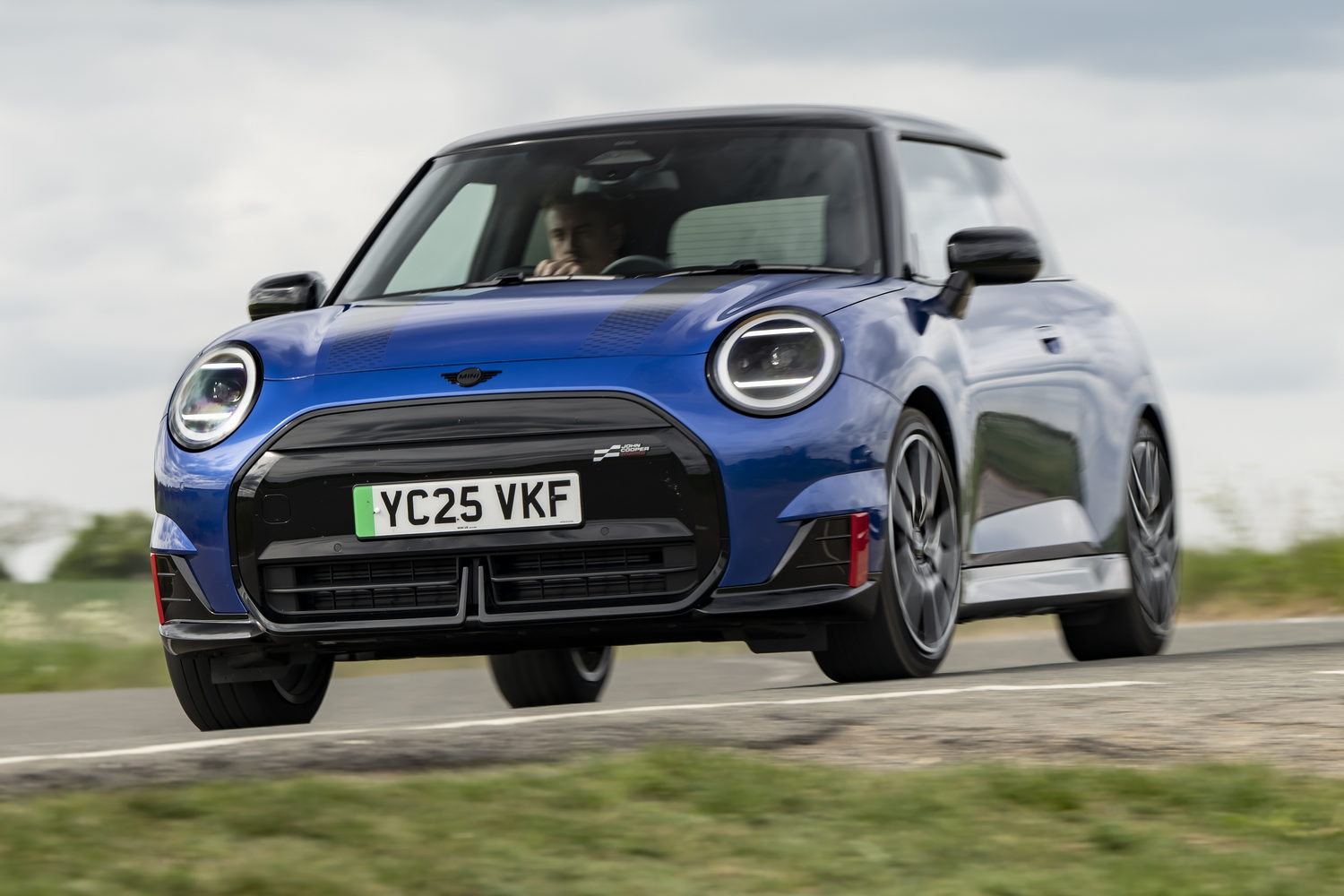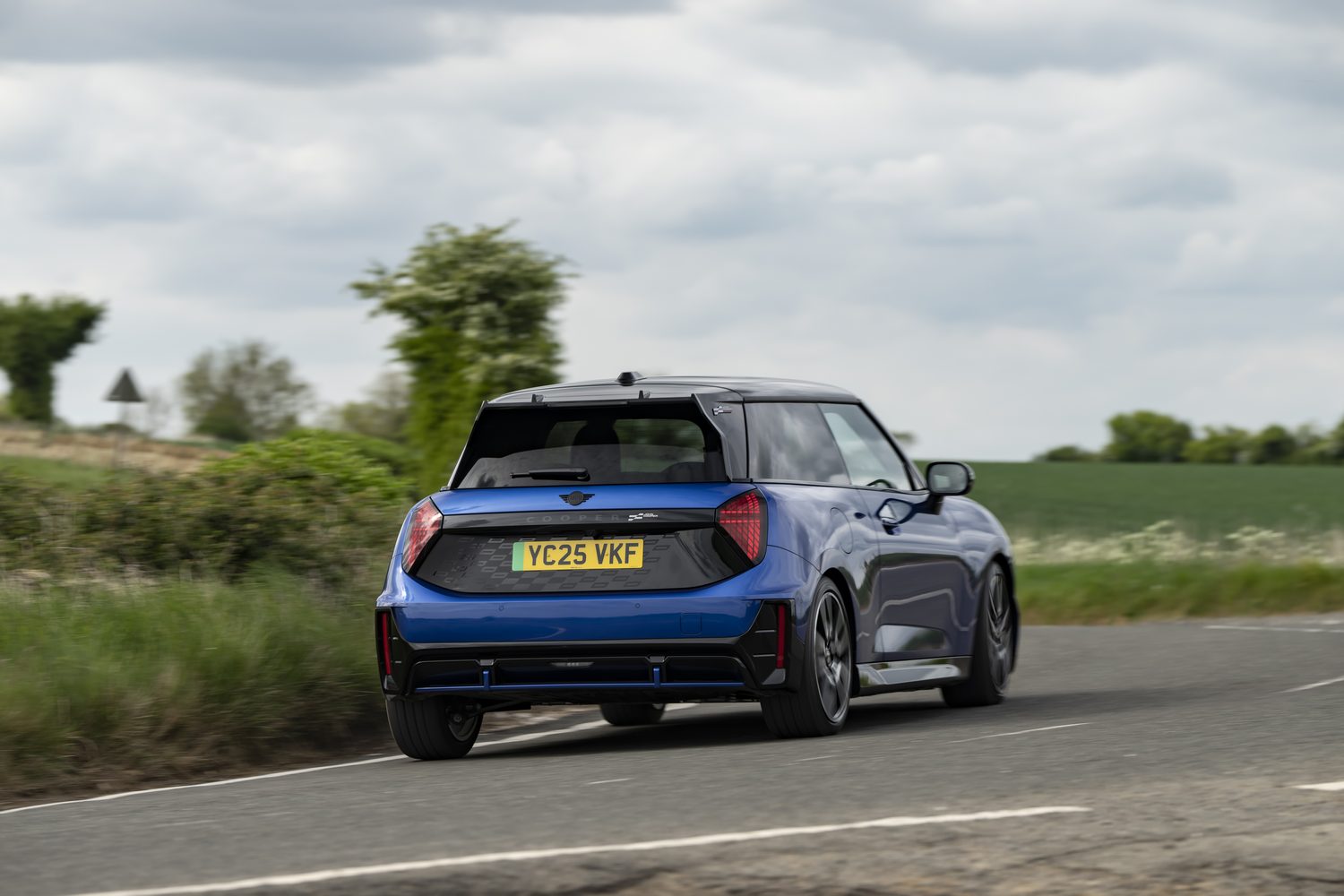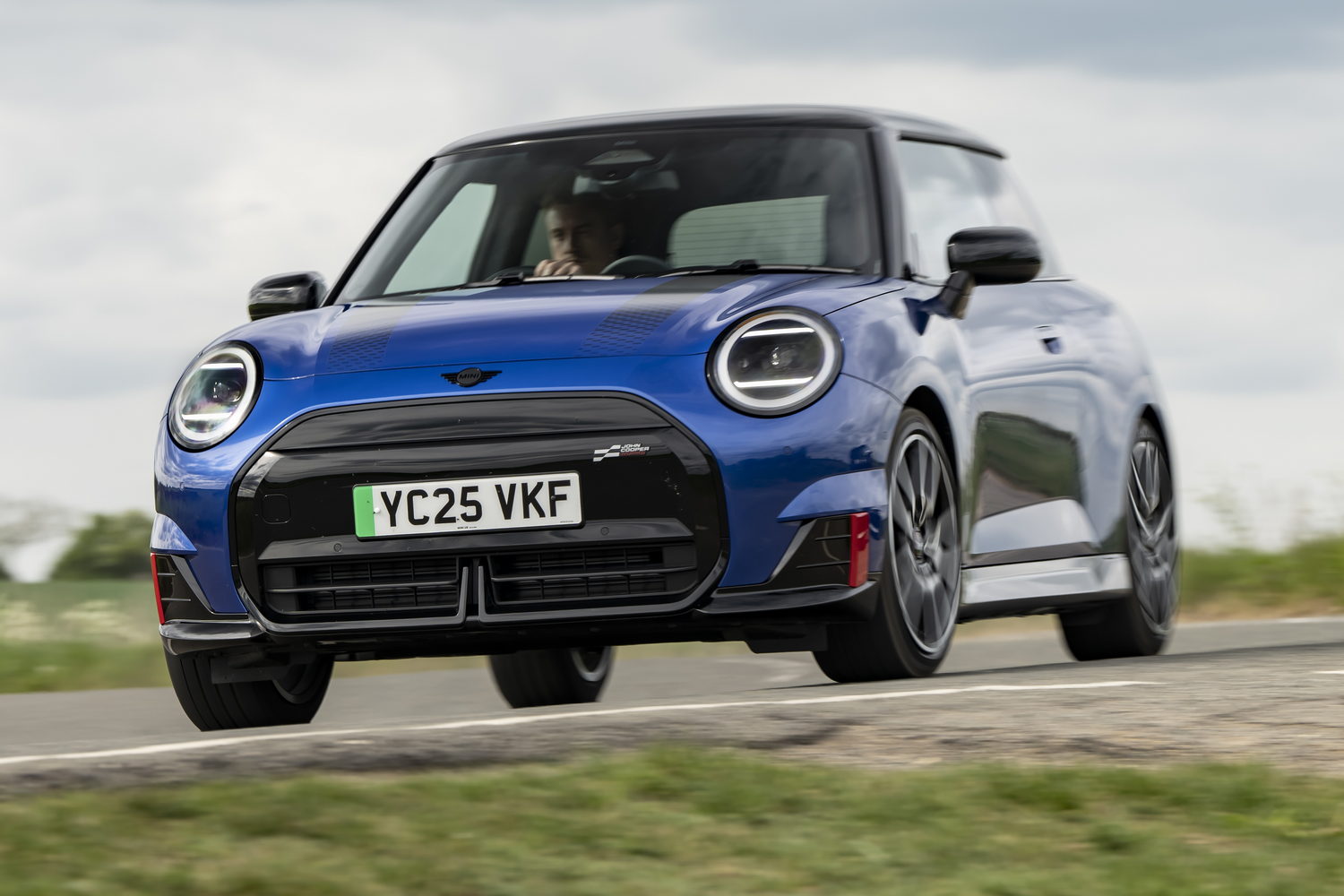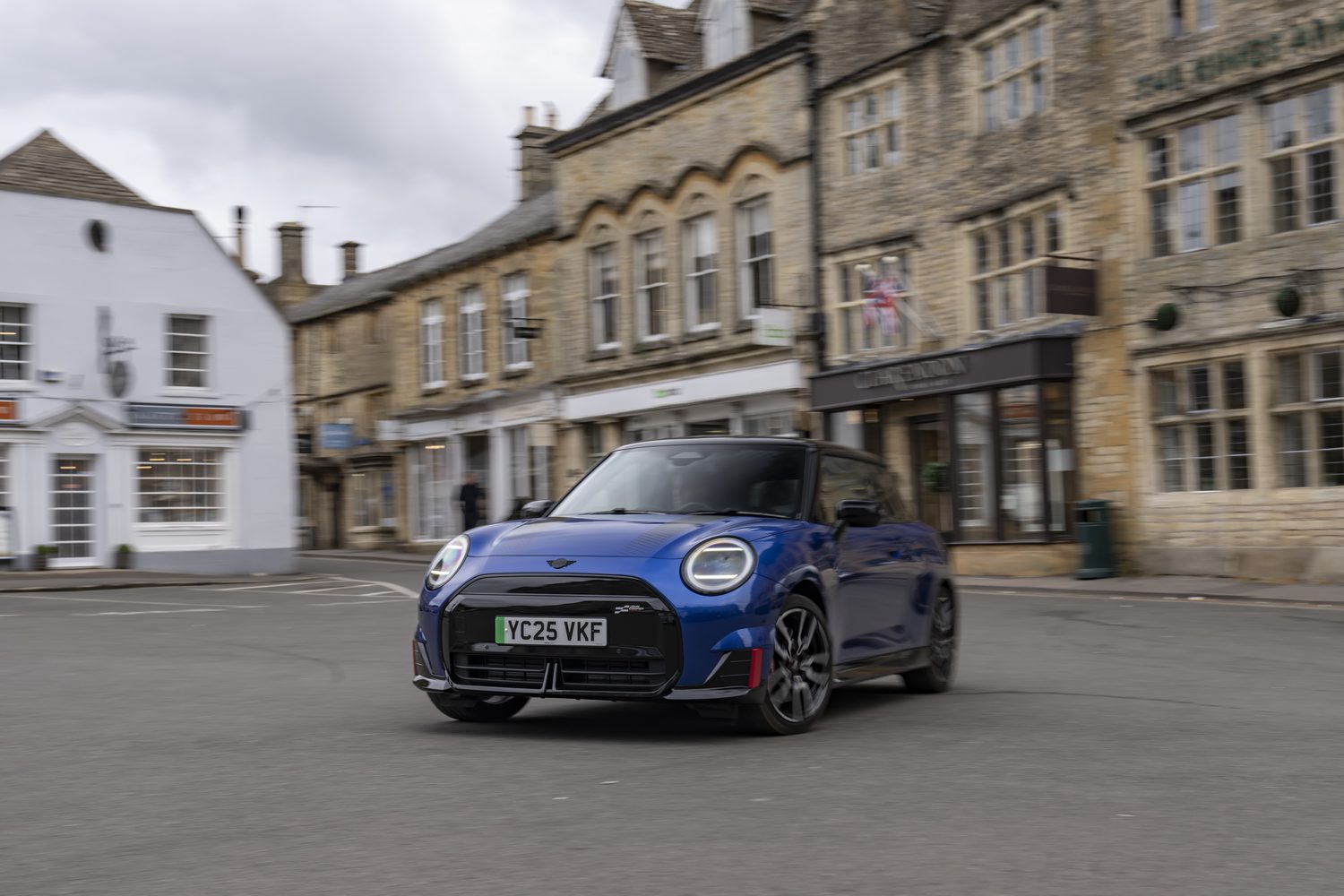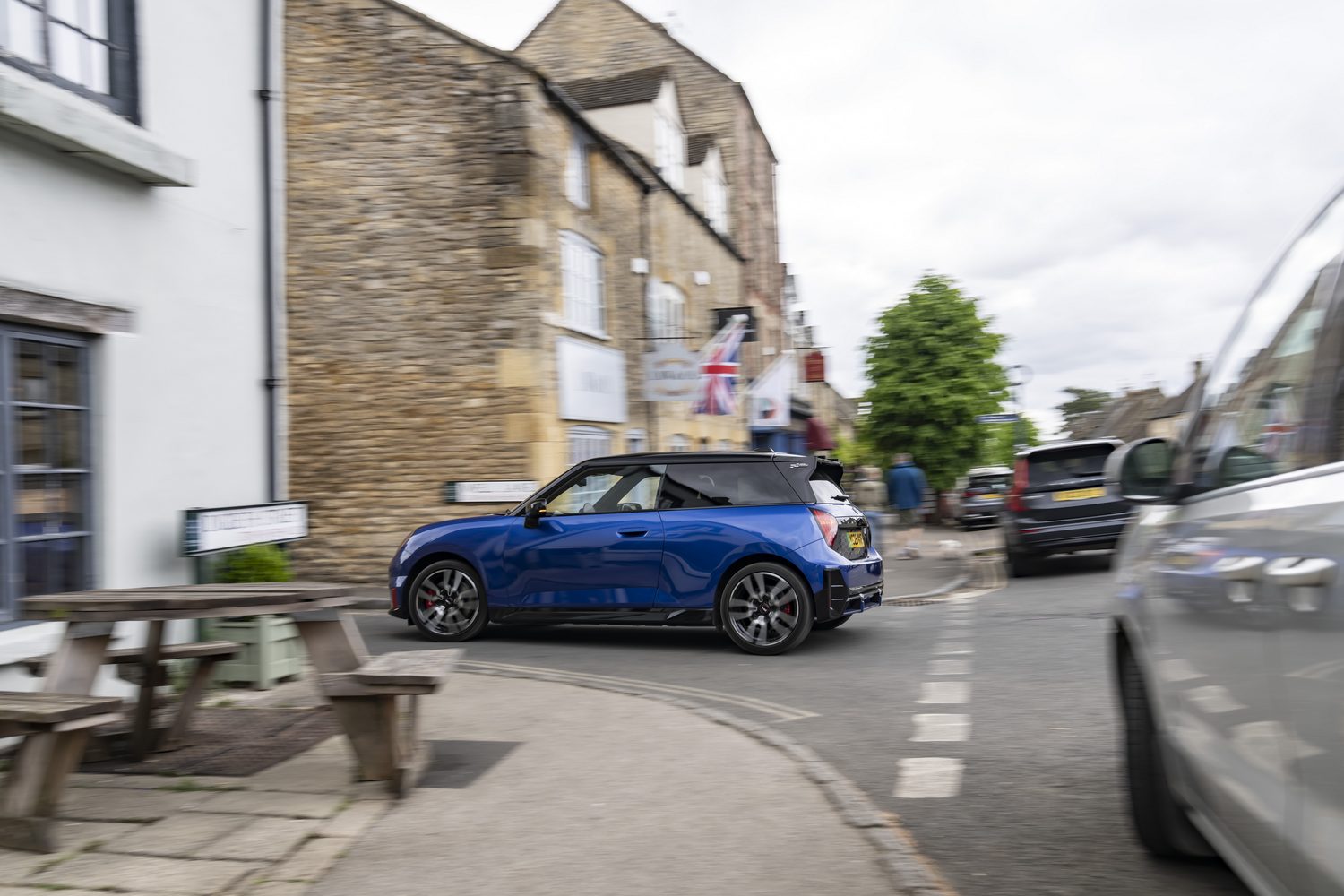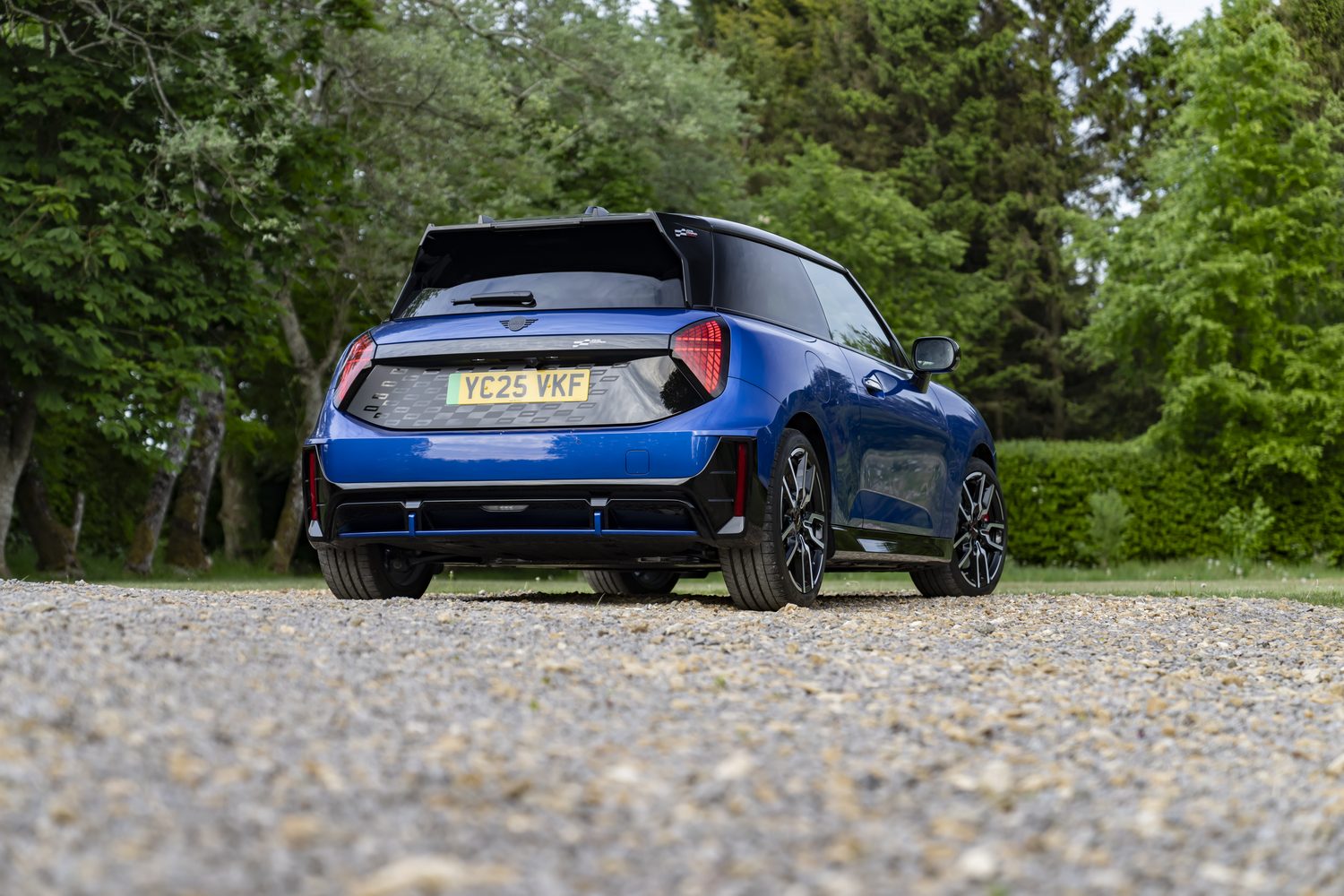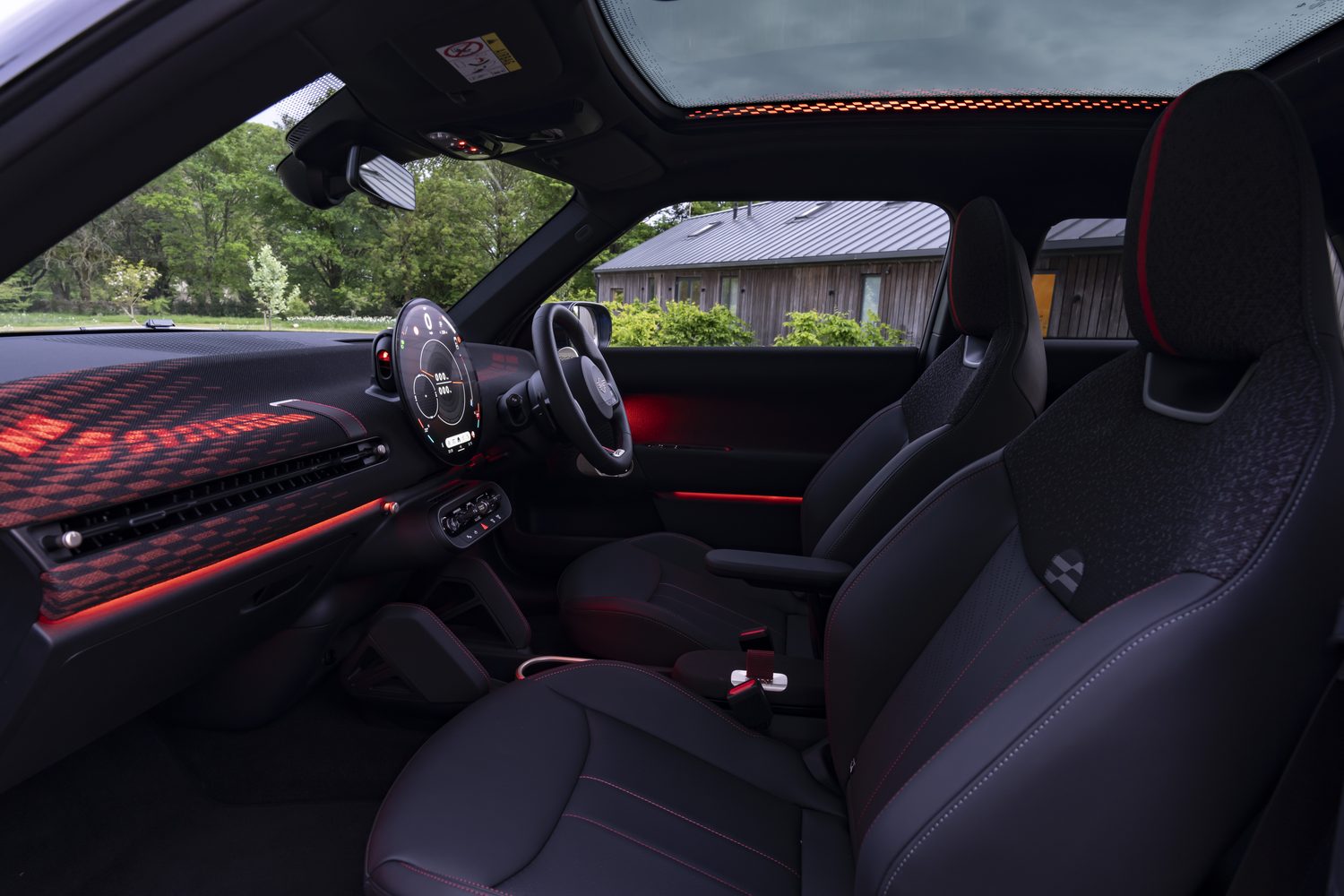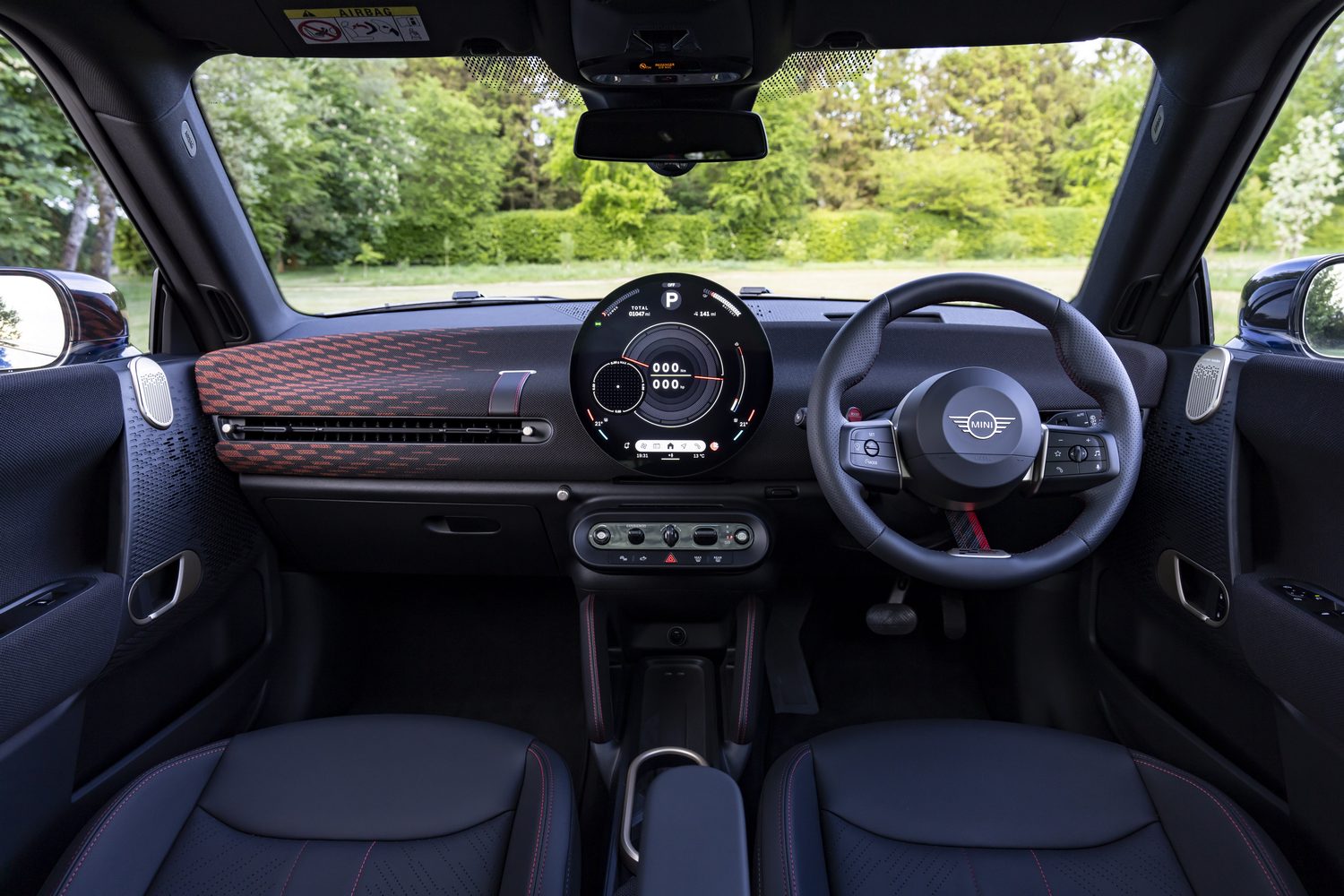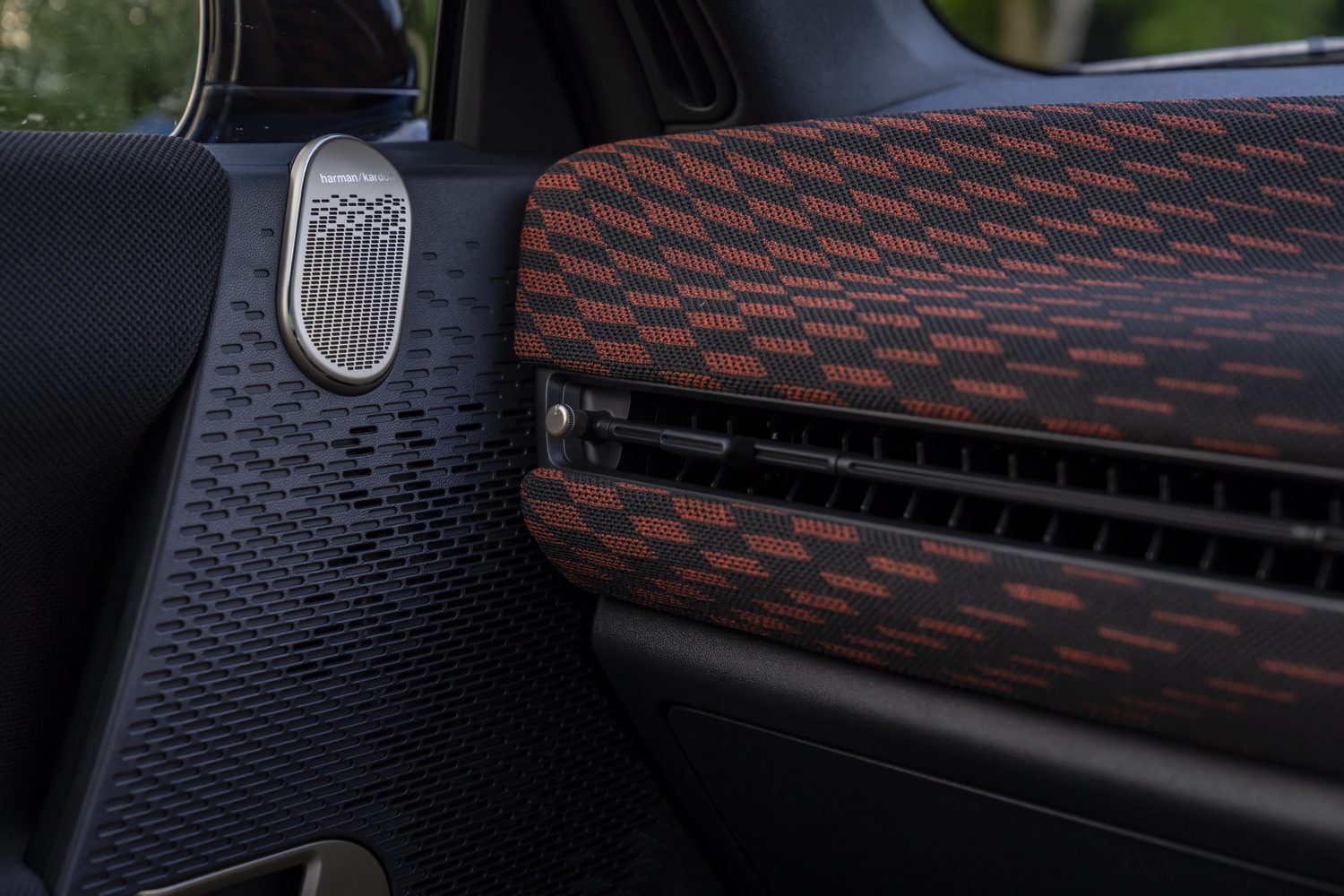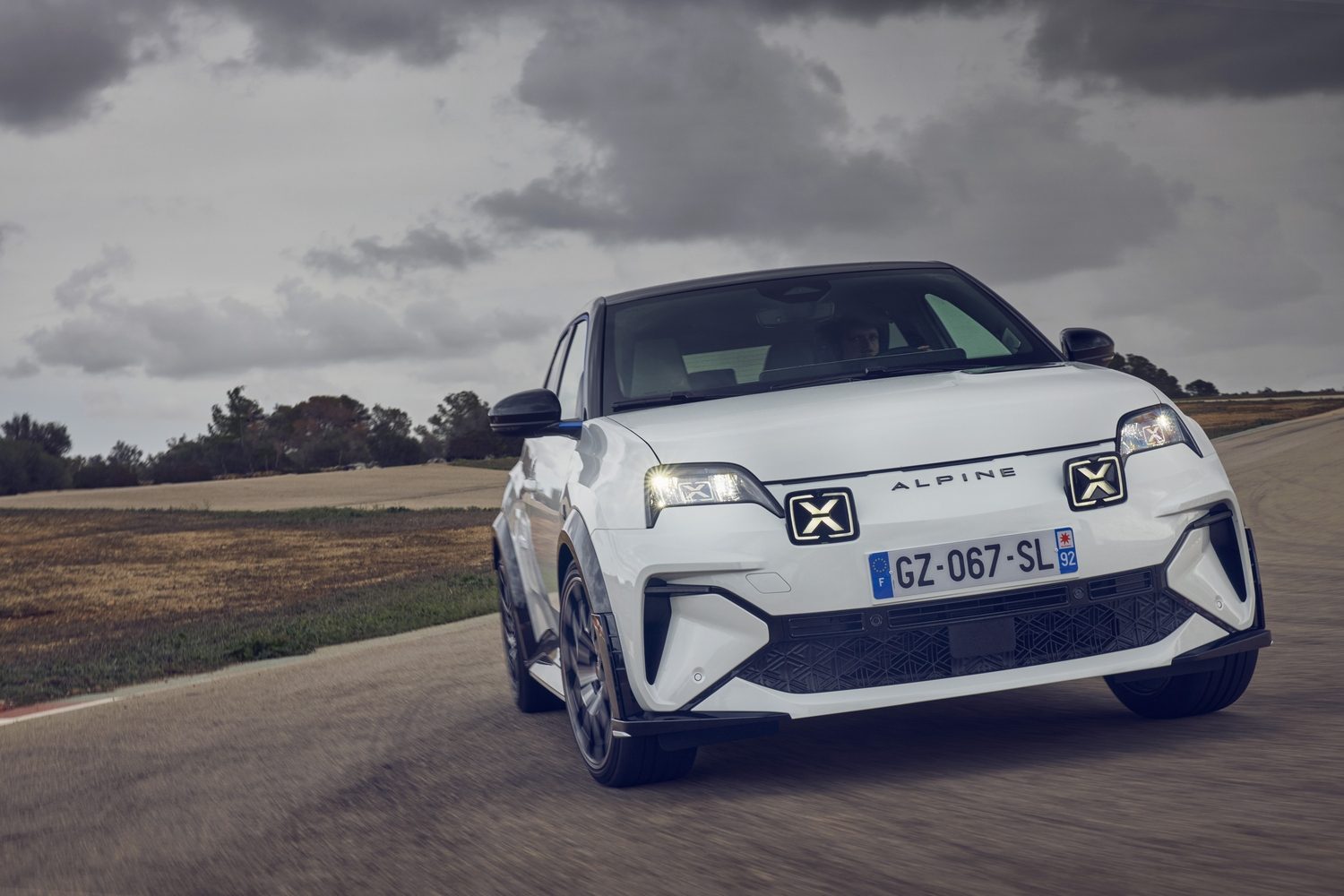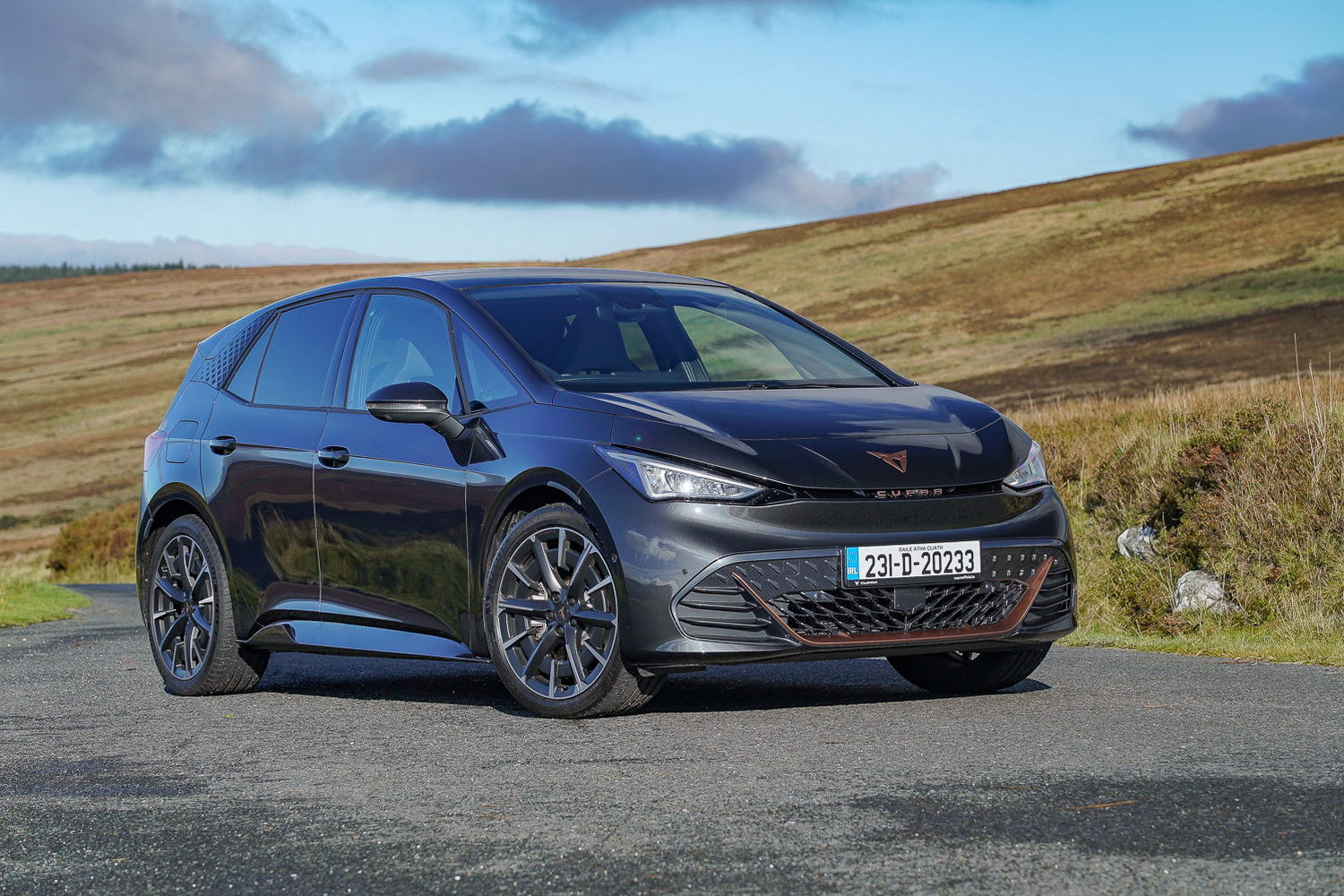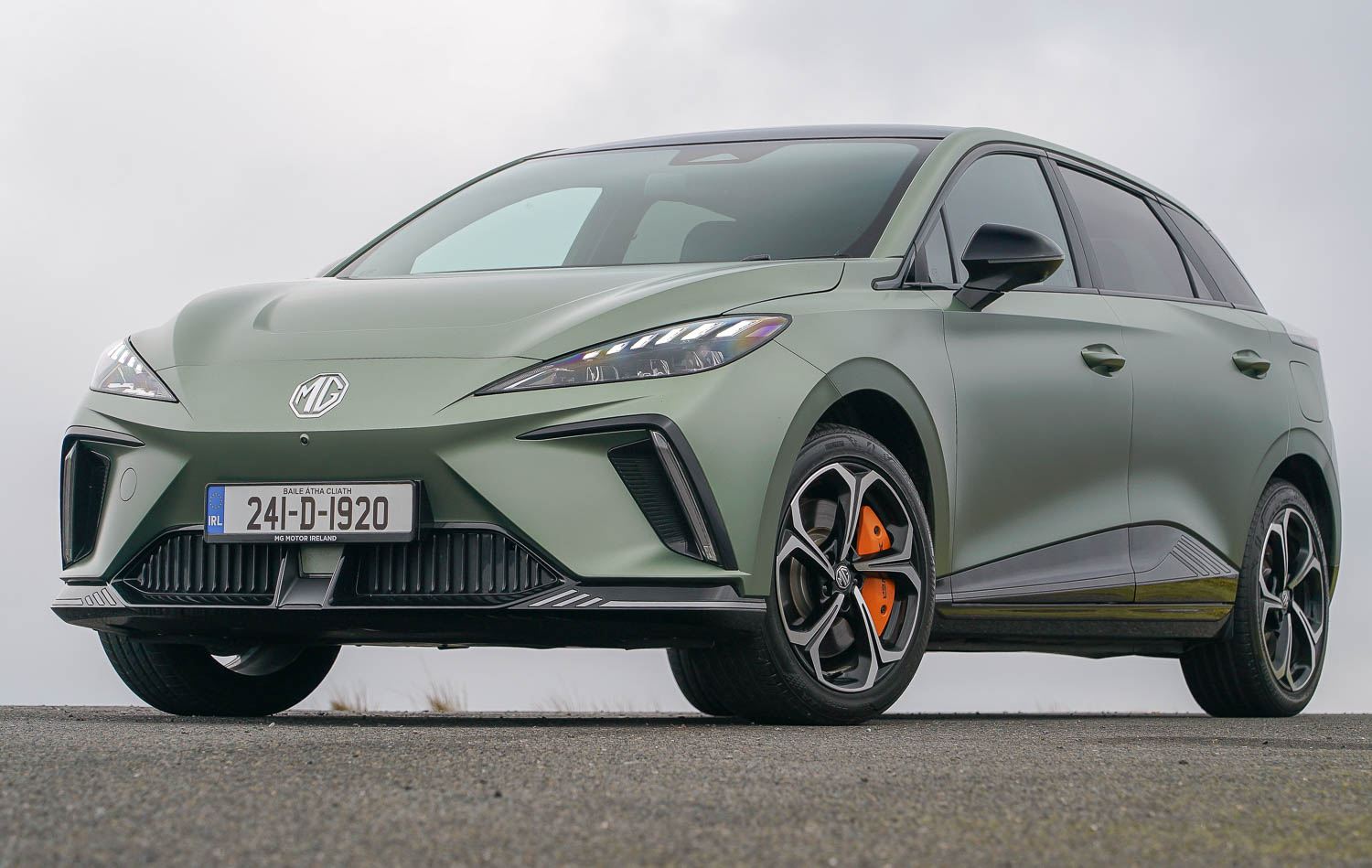Introduction to the 2025 MINI John Cooper Works Electric
MINI's fabled John Cooper Works (JCW) badging has long signified the most exciting and highest performing models in its line-up, but now - for the first time ever - you can have your JCW on a fully electric vehicle.
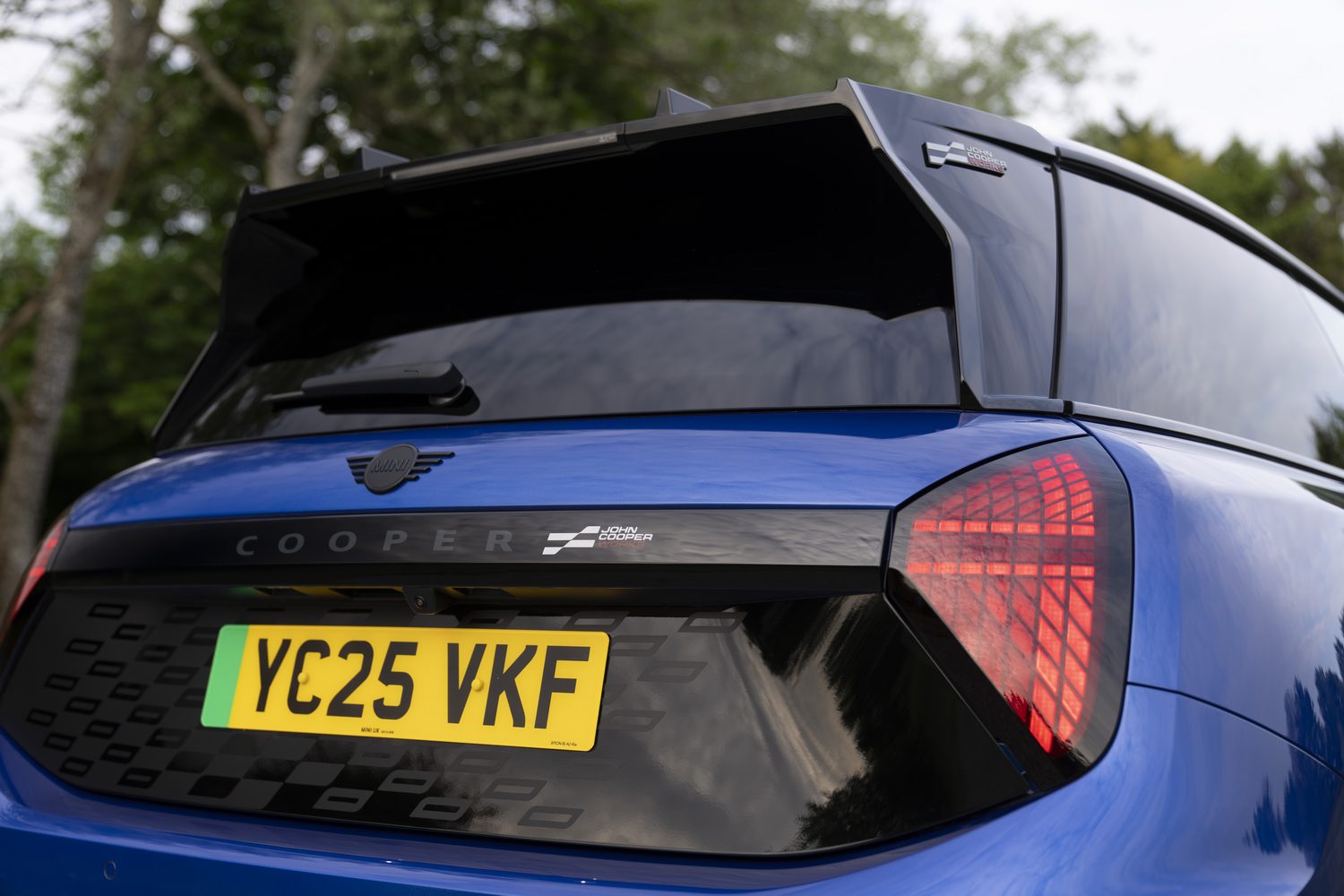
Or, more accurately, two fully electric vehicles, as the JCW Electric three-door hatch we're evaluating here is launching alongside a JCW version of the closely related MINI Aceman crossover. The difference with the JCW Electric, though, is that you can still get a petrol-powered JCW MINI Hatch instead if you so fancy, so the all-electric variant needs to put up a convincing show if it's to truly merit those three hallowed letters. We went over to MINI's homeland of the UK to try out this zero-emission hot-hatch newcomer for size.
Pros & Cons of the 2025 MINI John Cooper Works Electric
Pros: Looks great, smart cabin, cheaper to buy than petrol
Cons: Awful suspension, lacks thrills, compromised practicality

Exterior & Design of the 2025 MINI John Cooper Works Electric
• Enhanced bodywork includes chunky spoiler
• Red details and badging mark out JCW
• Three-door body hard to find these days
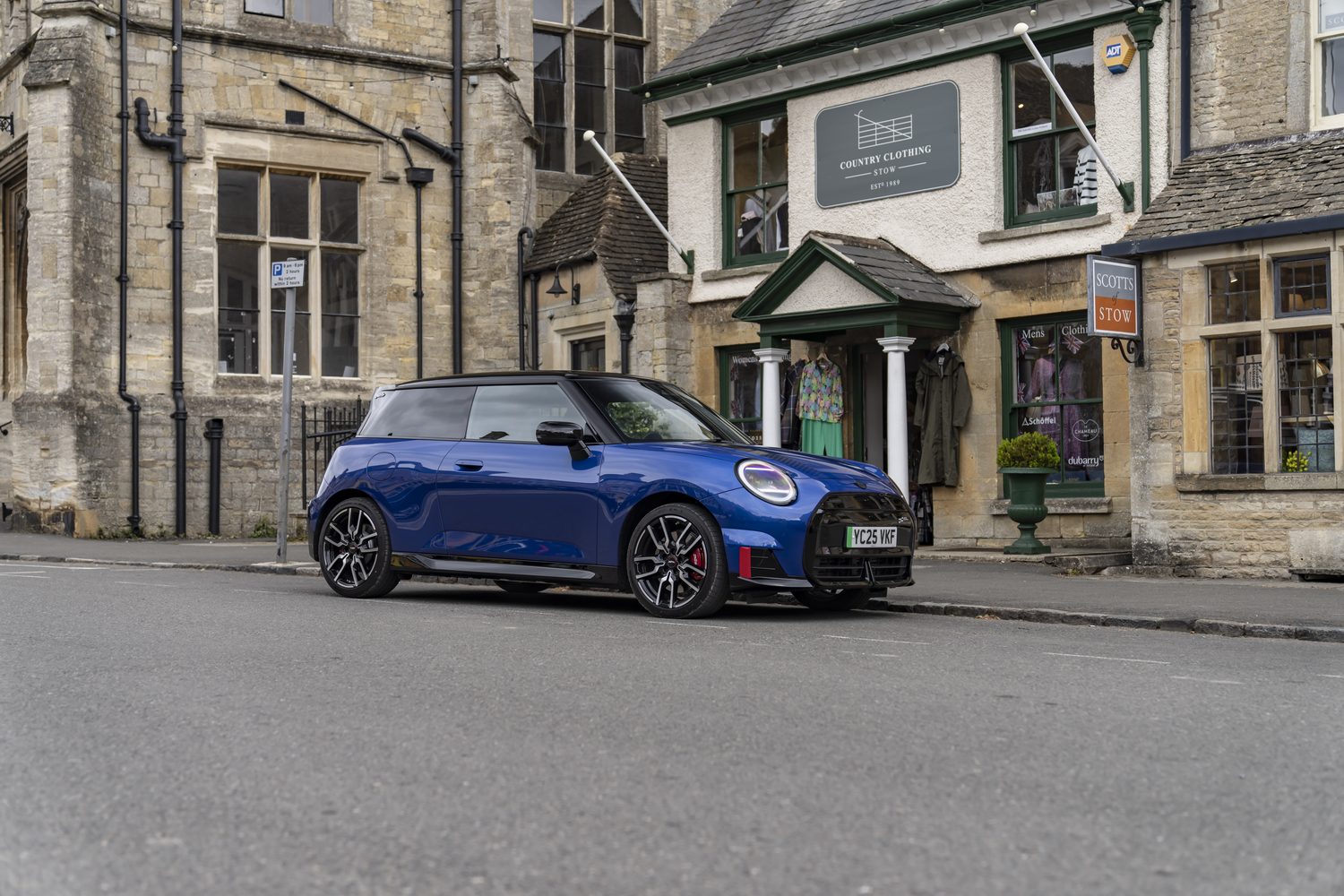
Although it's technically a completely different car to the petrol-powered three-door JCW (they carry different BMW internal development codes, with this electric version the 'J01' and the 2.0-litre turbo alternative known as the 'F66'), the JCW Electric looks similar to its combustion-propelled relation. Its three-door shell is a rarity in hot hatchback circles in the 2020s, so that will win it fans in the first place, and then overlaying a MINI Hatch's overtly cheeky styling cues with some spicy JCW telltales only helps seal the deal.
Going into specifics on those details, the JCW Electric can be identified by its meatier front and rear bumpers, enlarged side skirts, gloss-black exterior trim, red highlights (mainly deployed for the vertical uprights at both ends of the car, plus the colour is used on the brake callipers) and aerodynamically optimised 18-inch alloy wheels.
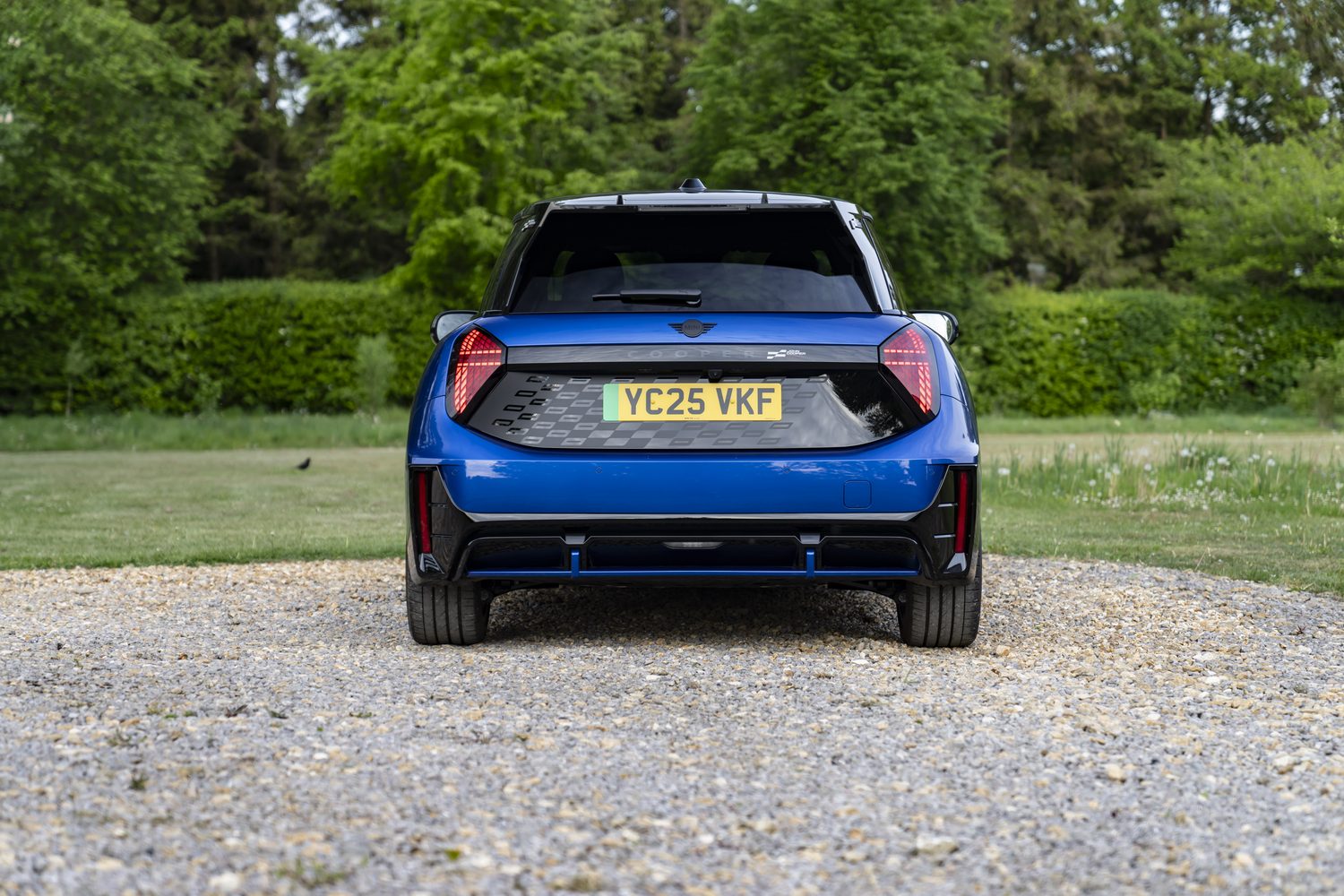
Perhaps the biggest giveaway, though, is the aeroblades-and-spoiler combination sitting atop the tailgate, emblazoned with the red, white and black JCW logo that you'll also find on the front bumper and rear hatch badging strip.
Overall, it obviously makes for a good-looking car, albeit not one which will aesthetically take you by surprise - we've seen this sort of thing on a large number of JCWs before.
The John Cooper Works Electric's dimensions are:
Length: 3,858mm
Width: 1,756mm
Height: 1,460mm
Wheelbase: 2,526mm
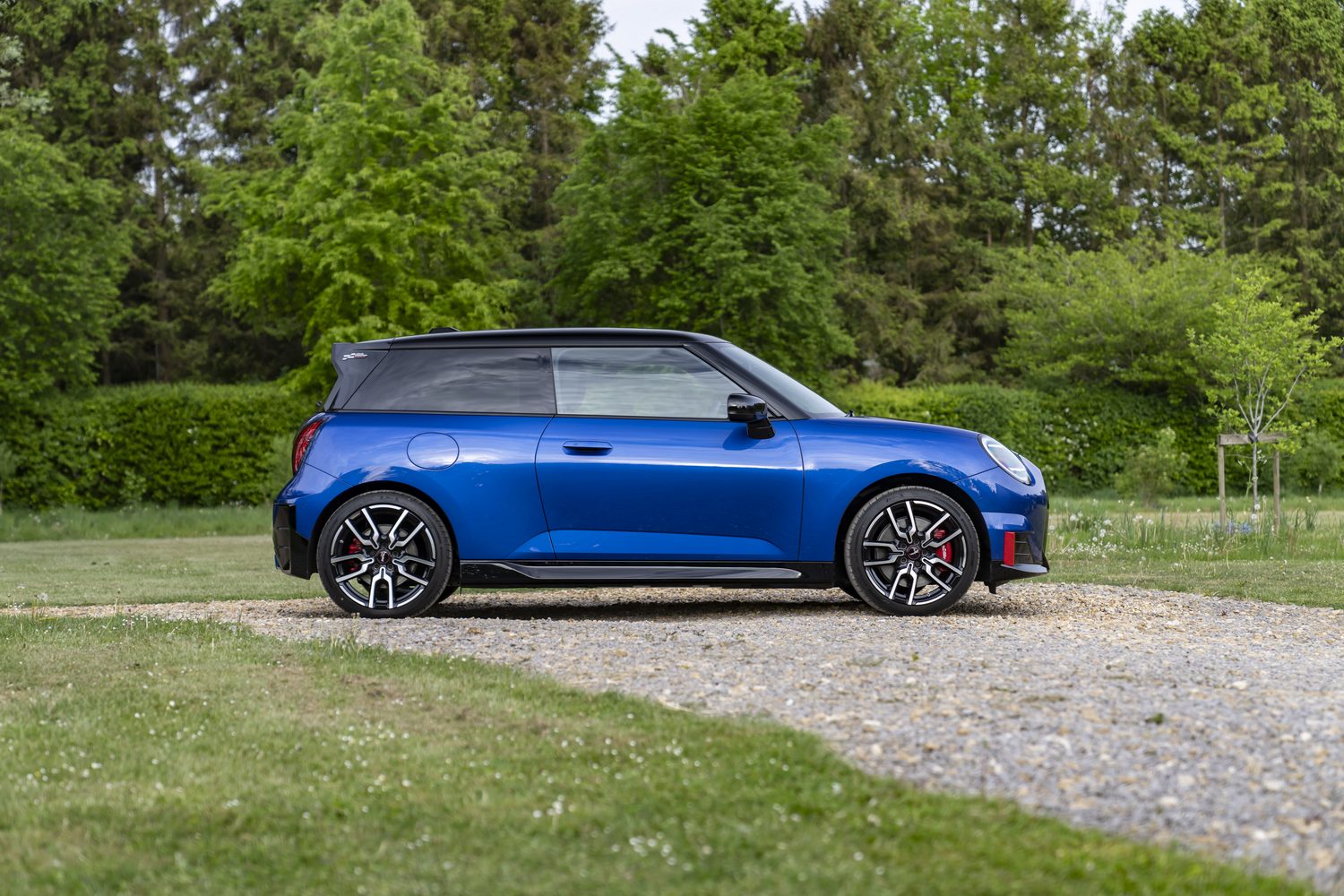
Six main body colours are offered for the MINI JCW Electric, with Chili Red II being the only no-cost, standard finish. Five metallic options, including British Racing Green IV, are all €701 apiece, and all paints can be teamed with a contrast roof (black or red, principally). Alloy wheel sizes are all 18 inches in diameter, with a choice of the standard rims or items which look more like those fitted to the JCW petrol model.
Interior, Practicality, Tech & Comfort of the 2025 MINI John Cooper Works Electric
• High-quality material finishing
• Subtle red-and-black JCW details lift ambience
• Still really only a two-seater with a tiny boot
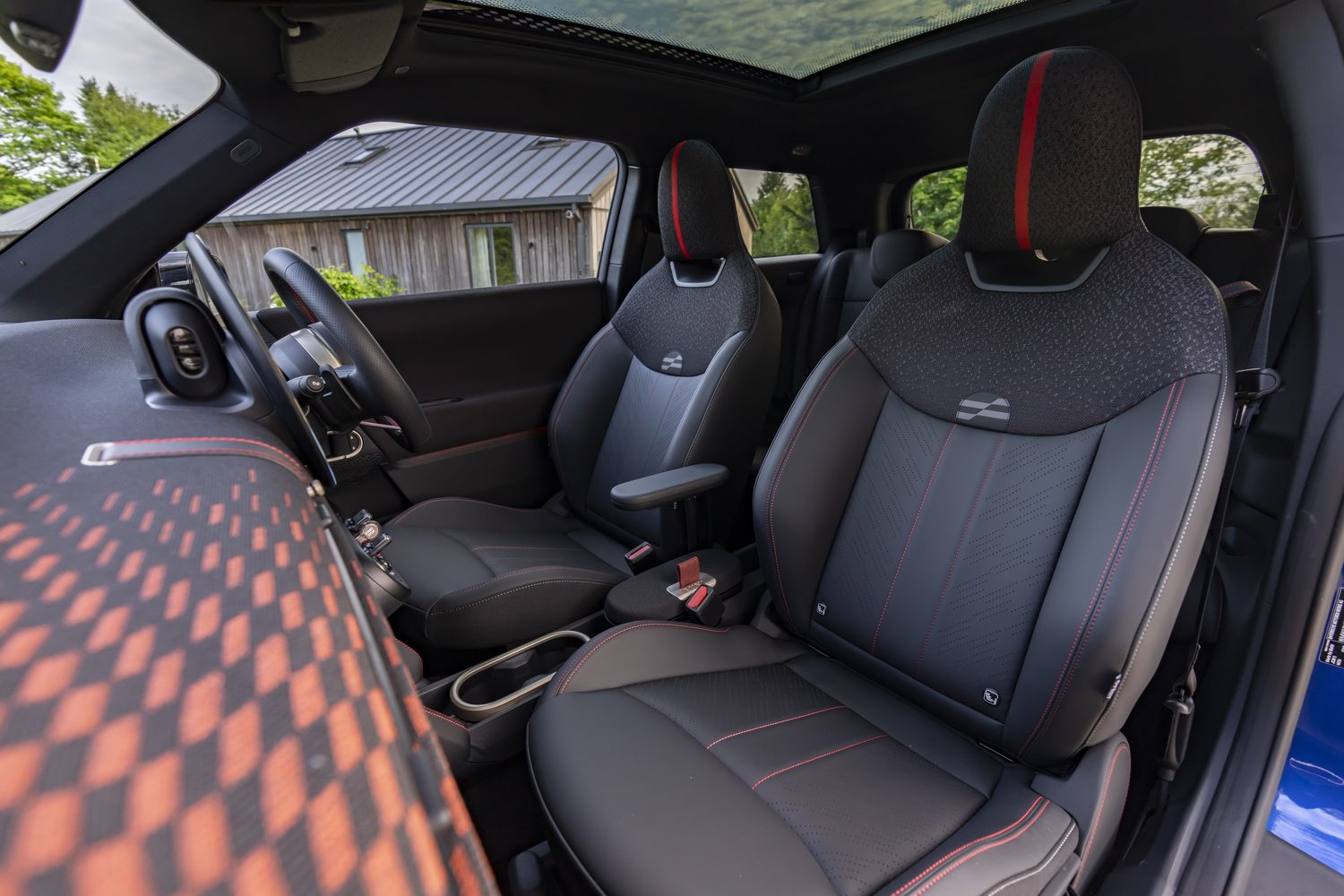
The current MINI family's interior is predicated on solid build and plush materials, and the Cooper E line is no exception to that rule. This means the 9.4-inch circular touchscreen infotainment dominates the attractively finished dashboard, and it runs pretty much all of the main features on the car.
There's a model-specific John Cooper Works mode with associated displays that show torque distribution, power usage and g-force on the central screen as a point of differentiation.
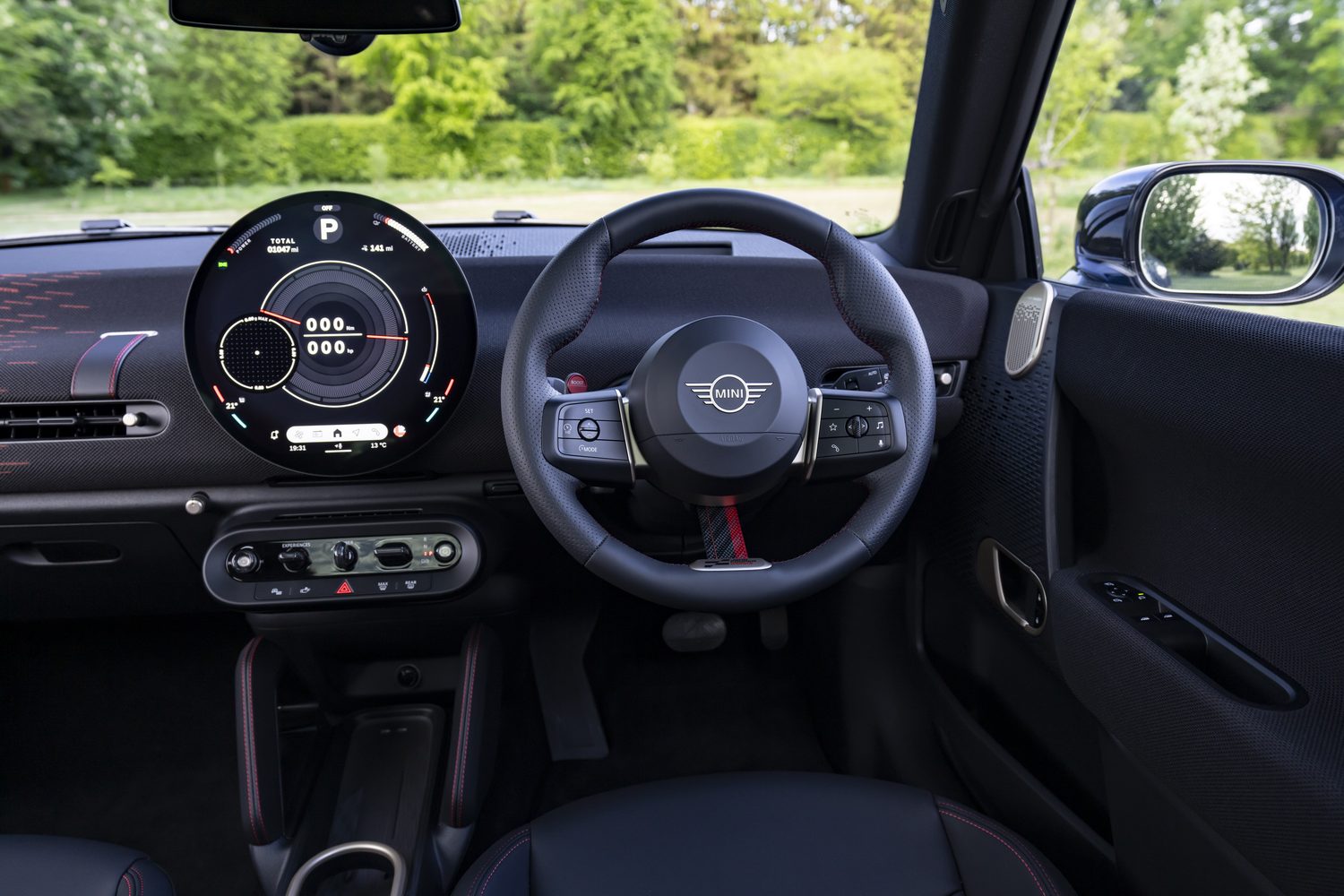
Beyond that, sports seats with a black upholstery offset by red stitching are reflected by the chunky steering wheel, again rendered with red stitching and also a red 12 o'clock marker. There's a small, fold-up head-up display for the driver and then a smattering of further JCW emblems inside, such as on the base of the steering wheel and found proudly on the door sills. It's a high-quality place to have to spend some time.
Provided, that is, you're not forced to sit in the back of the JCW Electric. Like any modern-era three-door MINI, the interior packaging isn't great and it's really only kids that are going to fit into the second-row bench with any sort of degree of comfort.
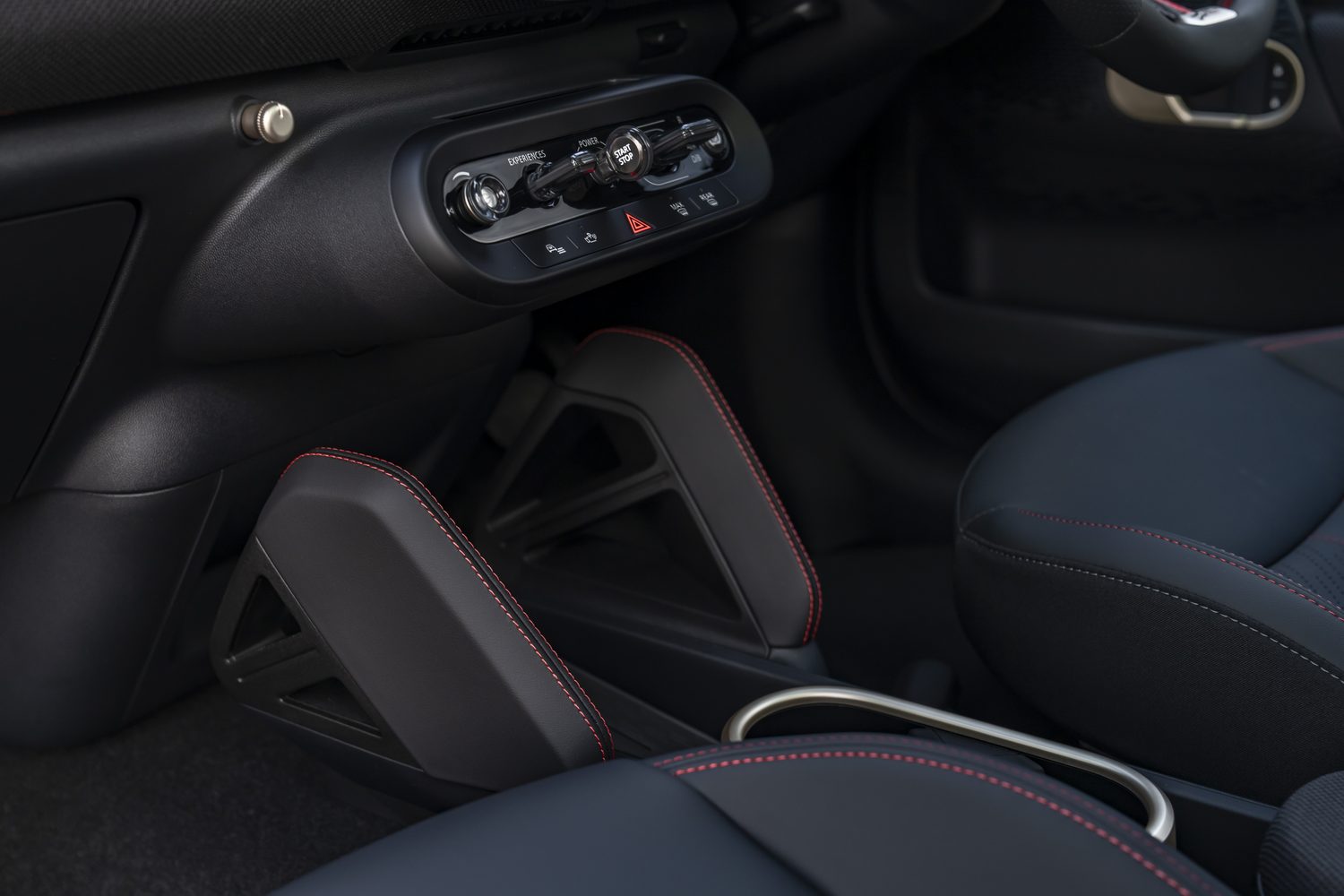
Similarly, the boot holds only 210 litres with all seats in use (and there are only four of them in the hatchback, not five), rising to an acceptable 800 litres with the rear backrest folded down. Put simply, there are better models in the MINI family - such as the Aceman and the Countryman - if you need to carry more people or luggage.
Performance of the 2025 MINI John Cooper Works Electric
• Strong straight-line performance
• But overtly harsh suspension dominates
• Not that much fun as a result
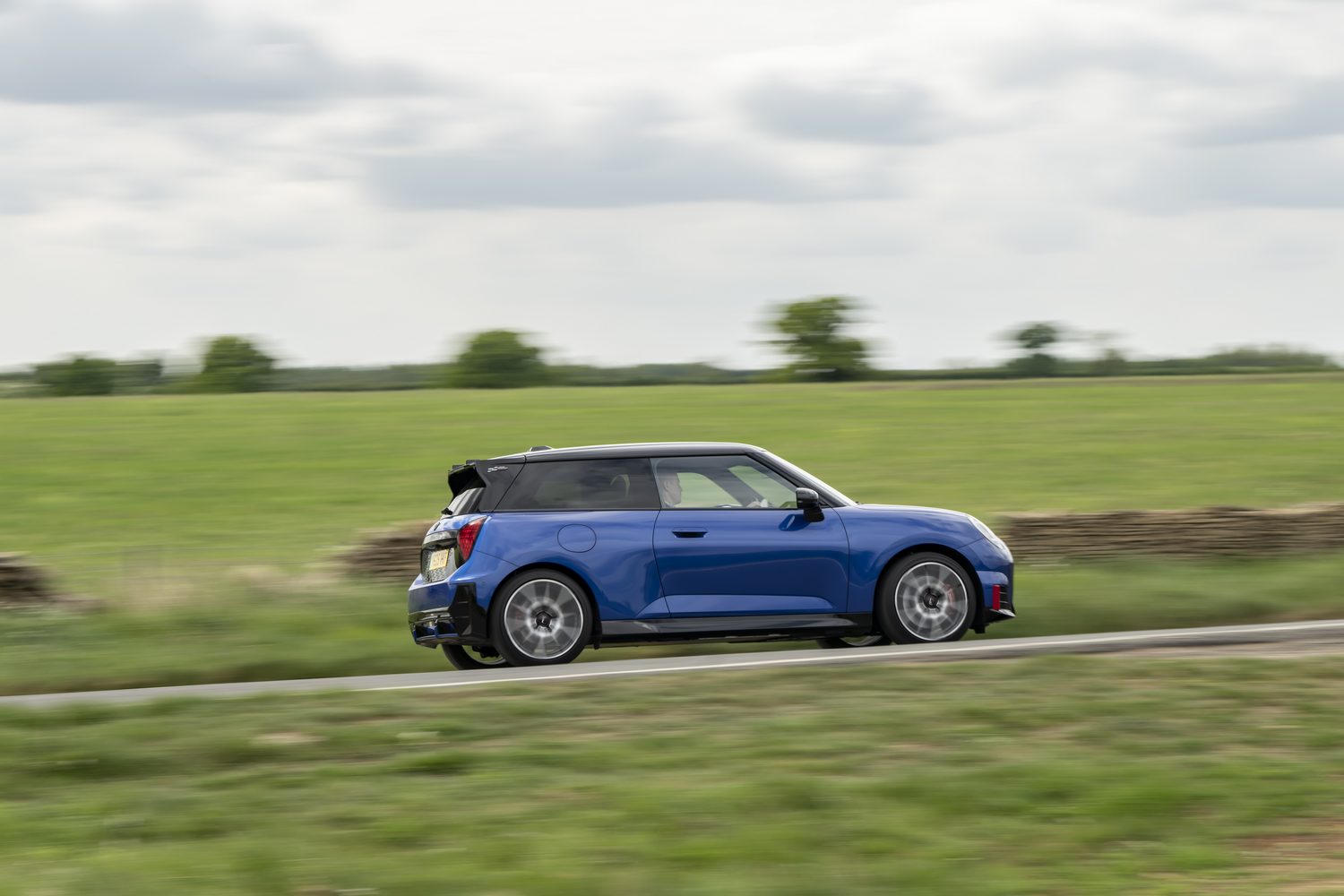
A 5.9-second 0-100km/h time means this hatch is two-tenths quicker than the comparable JCW petrol model for the benchmark sprint, while it's also fully half-a-second swifter than the JCW Aceman which has launched alongside it, mainly because it's 95 kilos trimmer.
So, it's a quick car in a straight line, with lots of lovely, instant-access torque to play with. For a time-limited phase, you can pull a red-coloured 'Boost' paddle behind the MINI's steering wheel and enjoy 258hp, with 231hp (the same output as the petrol JCW) available for the rest of the time.
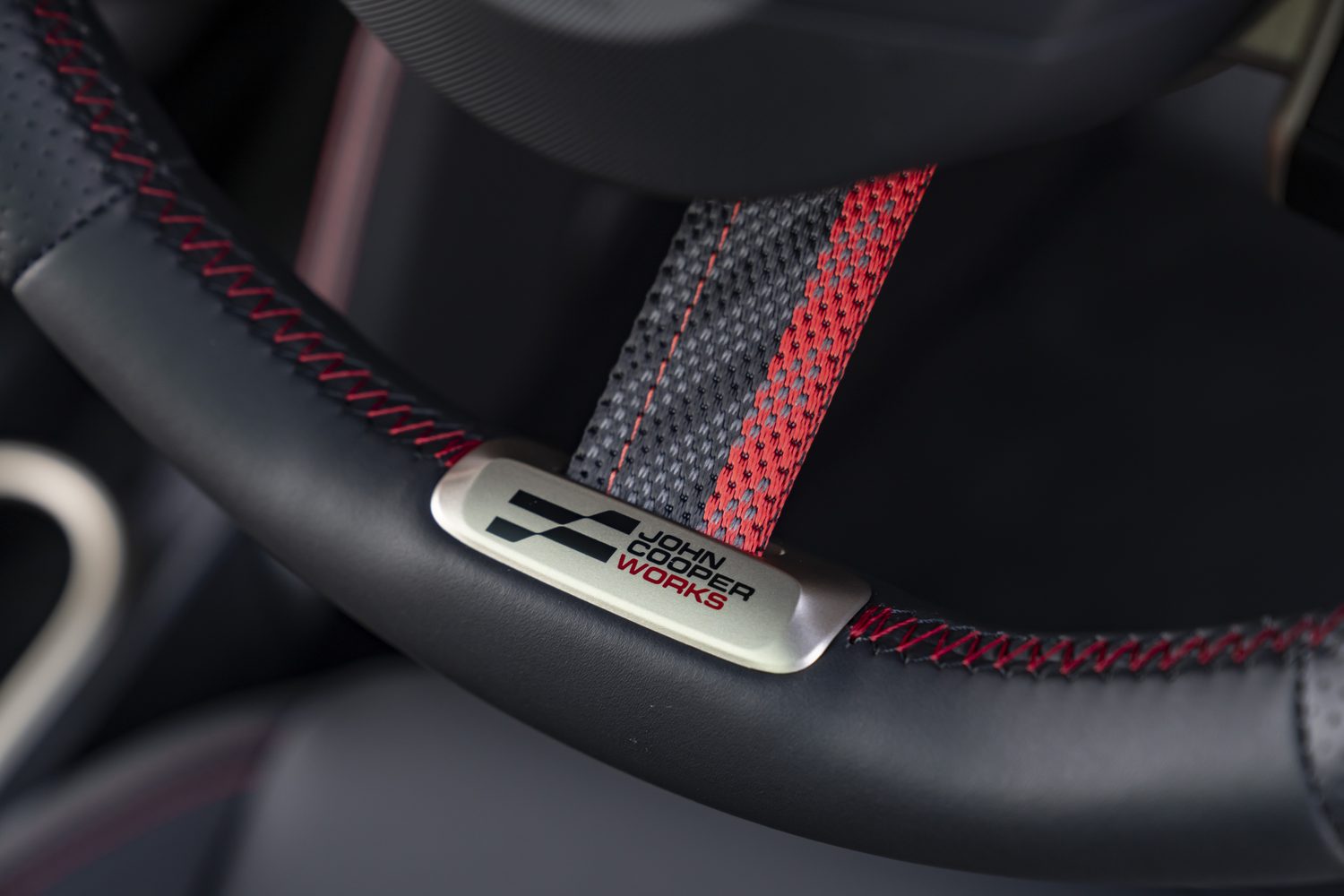
All along, the front-mounted motor of the JCW Electric is developing a robust 350Nm, so it always feels responsive no matter what drive mode it is in, while the judgement of both the accelerator and blended brake pedals deserves the highest of praise.
Regrettably, though, the tone of this section must now change, because that's where our positivity about the dynamics of the JCW ends. This is because it has been equipped with suspension that is nothing short of stupidly firm, and that ultimately colours and, sadly, ruins the entire driving experience.
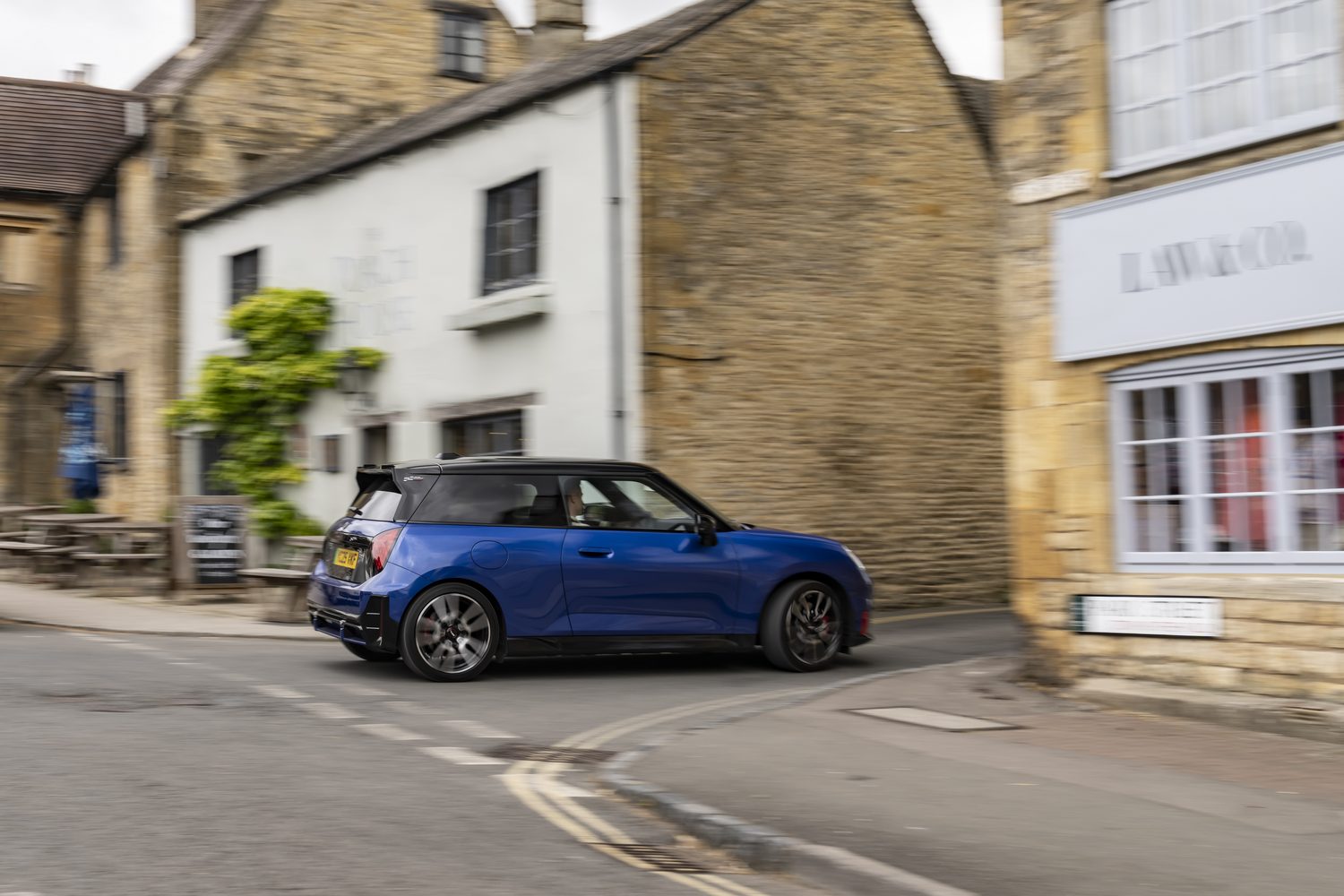
Due to being lighter on its feet than the related JCW Aceman, the ride quality of this three-door model is ever so slightly more tolerable than it is in the crossover (and we have a full review on that car elsewhere on the site), but it's genuinely shocking how unsettled, nervous and frenetic the JCW Electric is at all times.
It just never calms down, not even if you're on a super-smooth bit of tarmac (and we found some freshly relaid road on our test drive, just for this purpose). You are constantly informed, by a bouncing, jostling and jiggly behaviour from the car, of precisely every last minor bump and nigh-on-insignificant ripple in the road surface.
You find yourself pogoing up and down in your seat even if you're just cruising along at a steady-state 80km/h on a fast-flowing country road. In fact, there is no (legal) road speed we could find where the MINI was even vaguely approaching 'comfortable' as it rolled along.

Worse still, these intransigent springs and dampers only serve to make the JCW Electric torque-steer wildly if you deploy full acceleration on a heavily cambered road, while there were also traction issues when attempting to accelerate sharply from low speeds that triggered the electronic warning lights in the dashboard; some form of electronic limited-slip differential might have helped here, but the JCW doesn't have such a thing.
Overall, the MINI seems to have fine steering, fabulous brakes and a good level of rolling refinement in terms of limiting wind and tyre noise from entering proceedings... but none of that really matters, or sears itself on your memory, when all you can recall is the car's truly appalling ride.
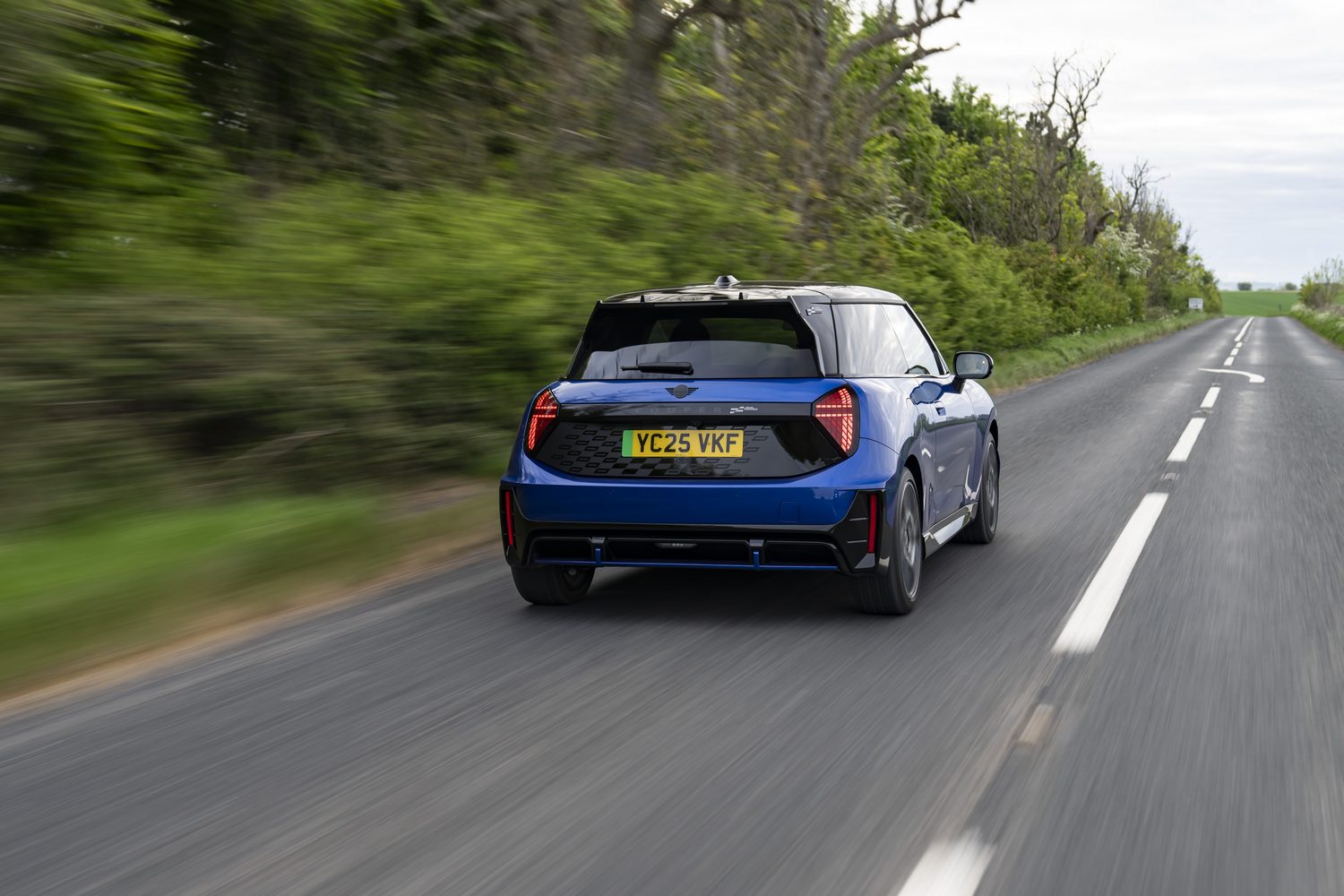
MINI's representatives said that some customers don't mind this outlandish level of firmness in the suspension, so if that applies to you, by all means give the JCW Electric a whirl - you might very well love the extraordinarily and incessantly busy way it bobbles down the road.
Range, Battery & Charging of the 2025 MINI John Cooper Works Electric
• Gross capacity of 54.2kWh, 49.2kWh usable
• Official range in excess of 400km
• 95kW DC charging fastest rate
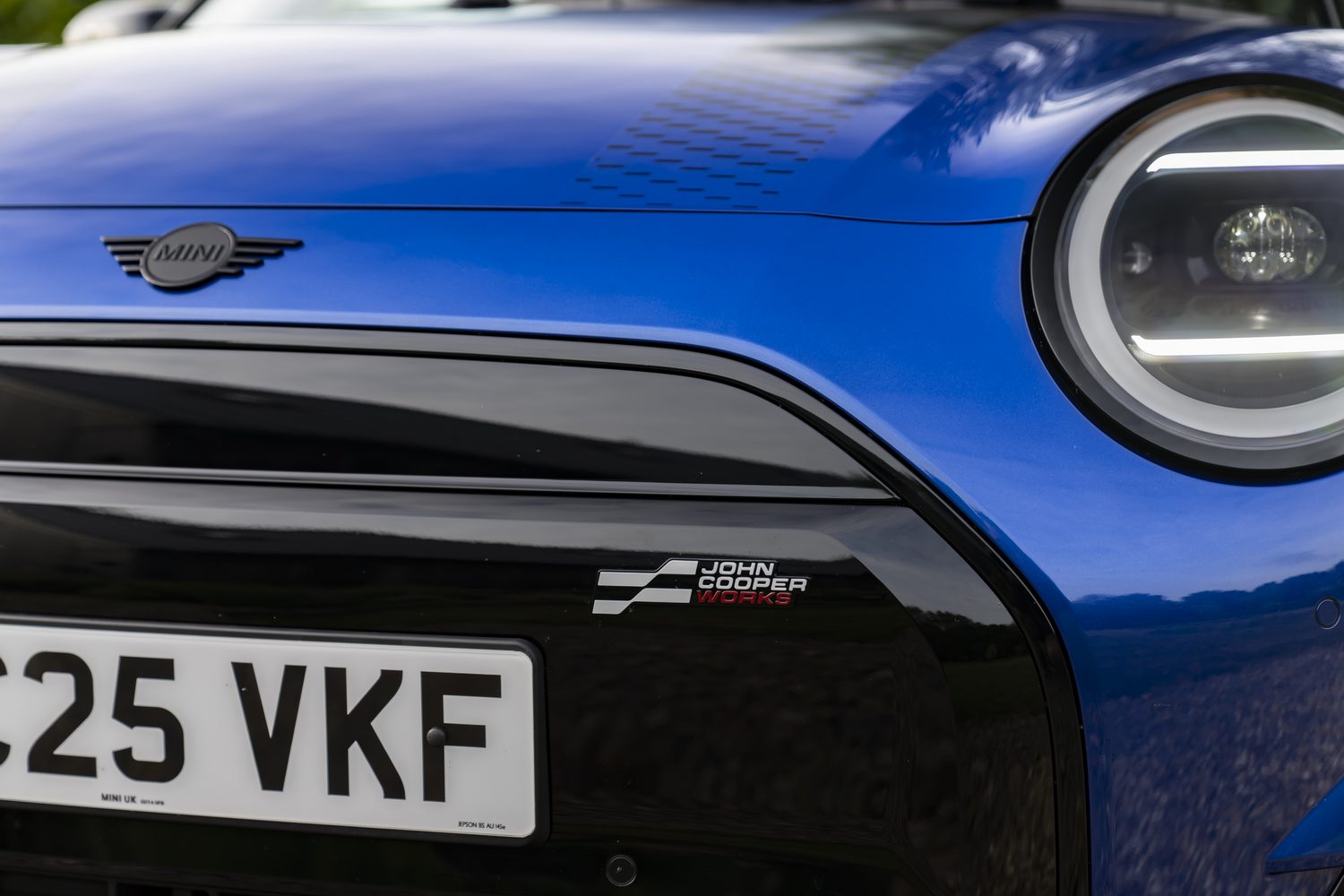
In an effort to keep the weight of the car down, and its costs, and also as a direct result of packaging constraints in a vehicle which is only 3.85 metres long, the MINI JCW Electric has a relatively modest 54.2kWh battery pack, which works out at 49.2kWh of usable energy.
This three-door can officially do a smidge beyond 400km to a single charge of the power pack, , although if you're using the EV's full performance for any significant length of time then you're probably going to struggle to do 350km. Or maybe even 300km.
In fairness to it, on our test drive we did see a very respectable 17.2kWh/100km from the JCW's onboard trip computer, but that was possibly because we very quickly got sick of the Space Hopper ride and drove as steadily as we could for the rest of the test loop.
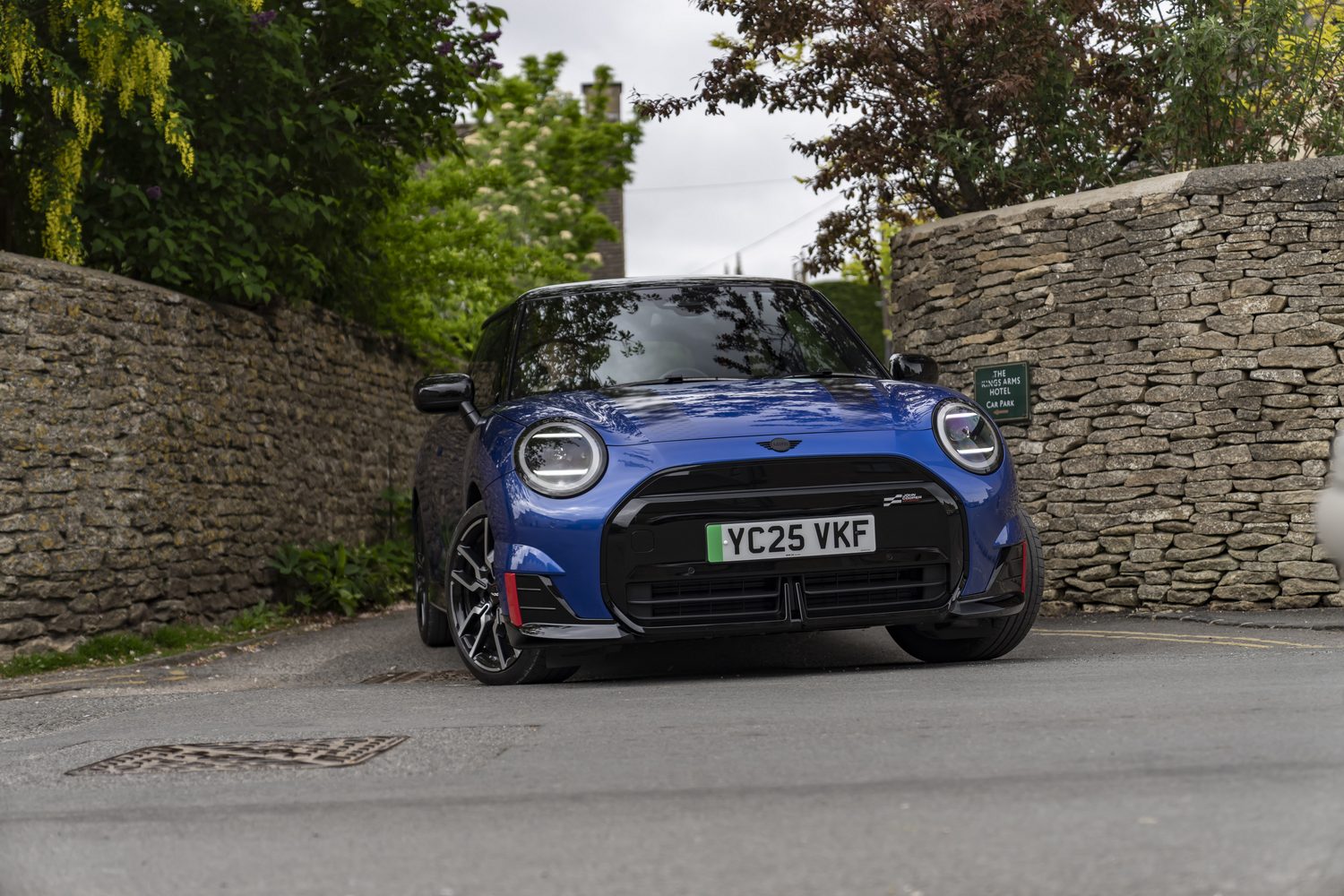
Charging speeds, meanwhile, are rapid enough, with a 95kW DC peak allowing for a 10-80 per cent top-up in just 31 minutes. It'll take five-and-a-half hours to fully replenish the battery pack of the JCW Electric on its fastest AC connection of 11kW, but a more typical 7.4kW domestic wallbox will need getting on for seven hours to do the same job.
Running Costs of the 2025 MINI John Cooper Works Electric
• Cheaper to tax than petrol JCW
• Service and maintenance fixed-price packages available
• Three-year, unlimited-mileage warranty
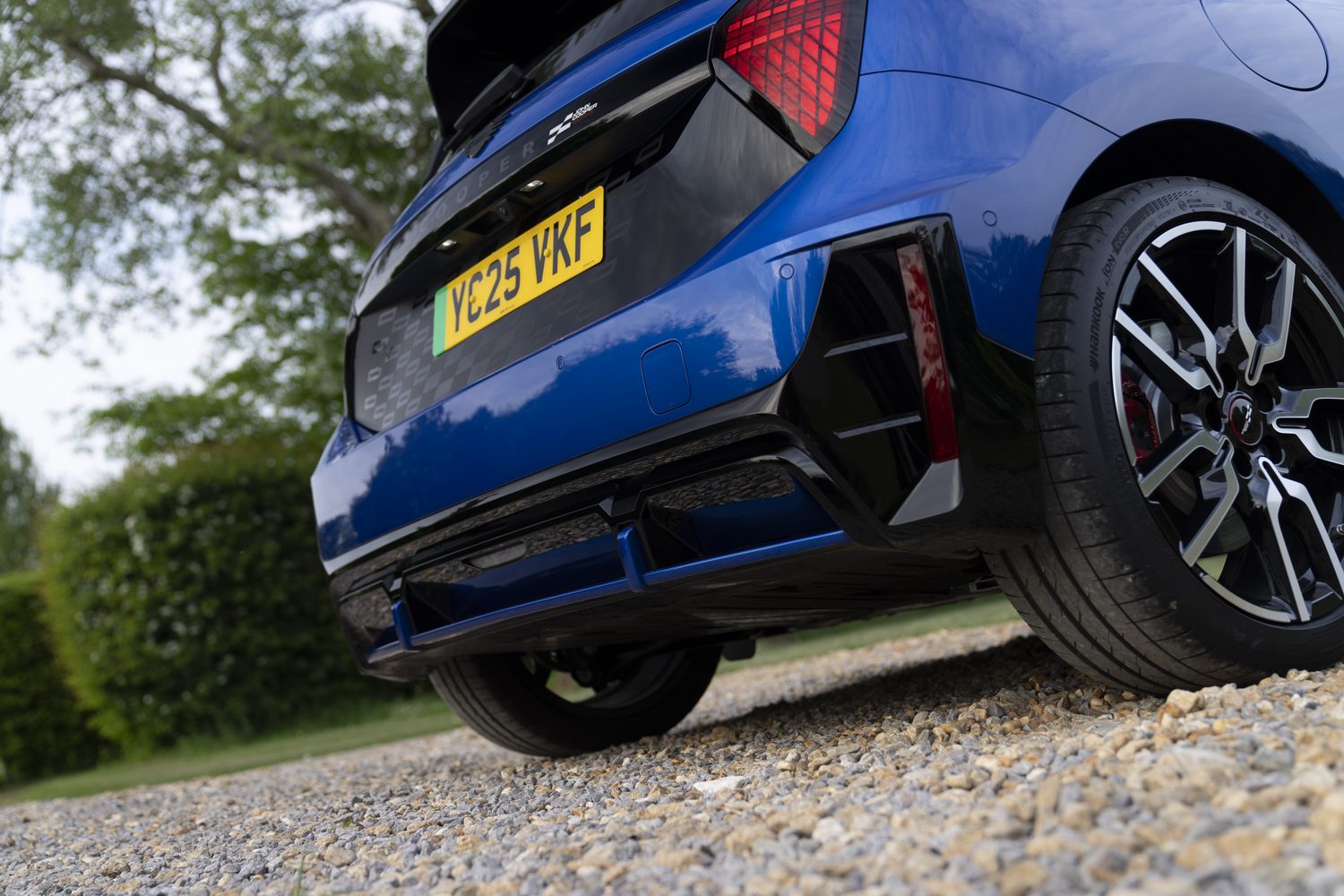
The benefits of the JCW badge being applied to a MINI EV come in terms of taxation, because not only is the Electric far cheaper to buy than the petrol JCW (see section below), it'll also be less expensive to run in the long term.
Its zero-emission status means it is less than half as much to tax per year than the 154g/km-of-CO2-emitting 2.0-litre turbo (€120 instead of €280), and if you can take advantage of a good, low domestic tariff of electricity then charging the car at home should reap you some healthy financial dividends.
Further, MINI Ireland offers a regulation three-year warranty on all its new vehicles, but that is at least unlimited mileage so it's a decent level of support. This EV JCW has an eight-year, 160,000km warranty on the battery pack and high-voltage motor, while various servicing and maintenance bundles can be arranged with the company for a fixed price.
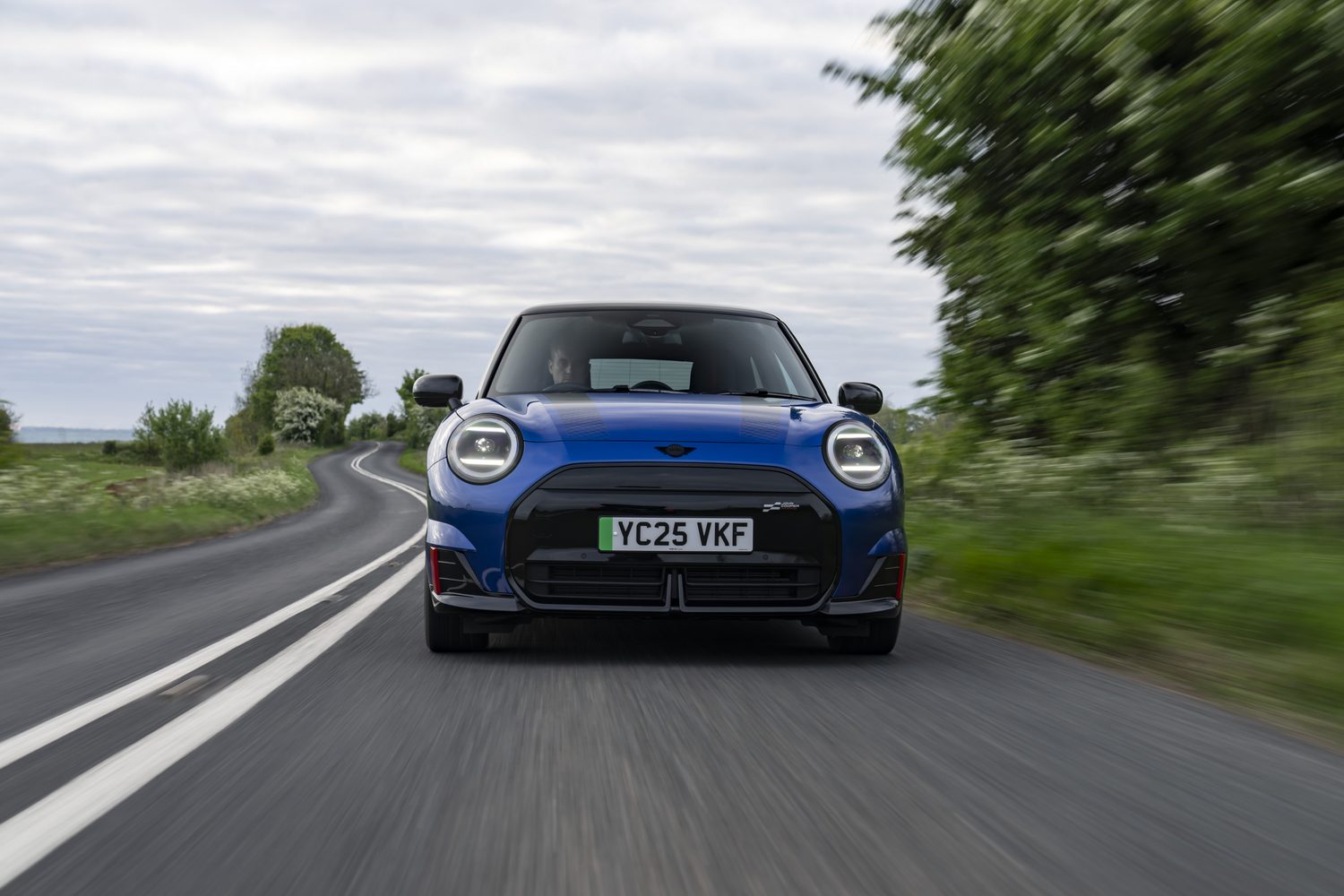
Indeed, there's a service inclusive package available for electric MINIs which will cover all of your car's servicing requirements for four years, with prices from just €455.
Irish Pricing & Rivals of the 2025 MINI John Cooper Works Electric
• JCW Electric starts from €38,014
• Good €12,000 cheaper than petrol alternative
• Reasonable standard equipment provided
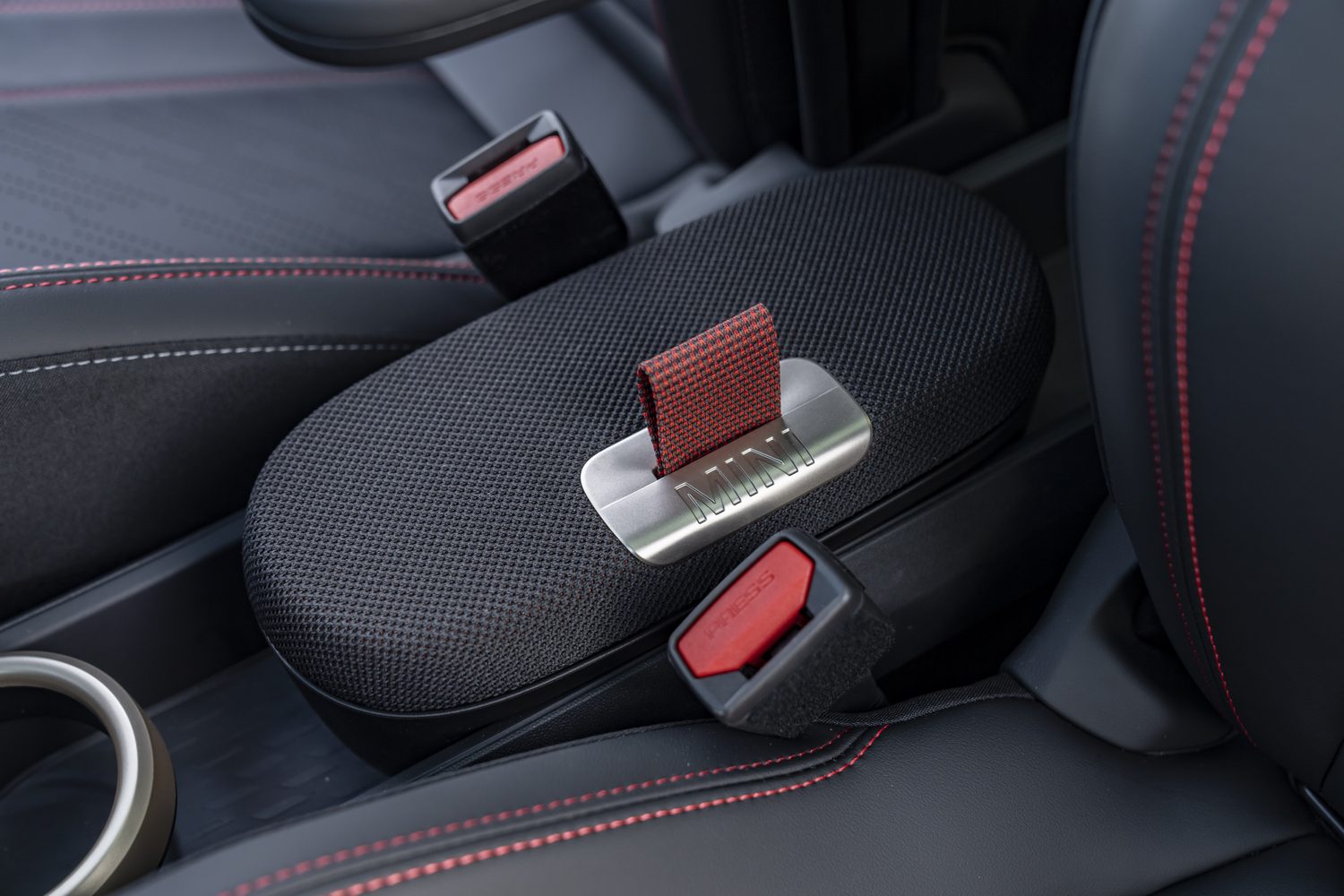
The main draw of the MINI JCW Electric is that it is substantially cheaper to purchase in the first place than the JCW petrol. Inclusive of the relevant grants, at the time of writing the JCW Electric starts from €38,014 - when the petrol variant is a staggering €50,390.
And for that competitive price, the JCW comes with plenty of standard toys, beyond just the exterior and interior styling gewgaws, including LED exterior lights, the connected and nav-enabled infotainment with wireless Apple CarPlay and Android Auto functionality, a Harman Kardon uprated surround-sound system, dual-zone climate control, wireless smartphone charging, Comfort Access (keyless entry/exit and go), heated front seats and a heated steering wheel, plus a healthy roster of advanced driver assistance systems to promote safety.
Verdict - Should You Buy the 2025 MINI John Cooper Works Electric?
An interesting and alternative take on the well-established John Cooper Works formula, the MINI JCW Electric has much to recommend it, such as the usual MINI kerbside charm, the high-quality interior and a temptingly low purchase price. However, you really need to try it out on a test drive to see if you can live with its harsh ride quality - if you can, then great: this is the new electric hot hatch for you.
FAQs About the 2025 MINI John Cooper Works Electric
Is the MINI John Cooper Works Electric available in different outputs?
No, it is best to think of the JCW as a 'trim' level, above the existing Cooper E and Cooper SE electric hatchback models. It serves as a high-performance flagship and therefore only comes in this 258hp specification.
Is the John Cooper Works Electric the only zero-emission high-performance MINI available?
Not at all, as it has been joined by a MINI John Cooper Works Aceman crossover at the same time. That car uses exactly the same electric hardware as this three-door, but all provided in a roomier, larger, five-door body. We have a full and standalone review of the 258hp Aceman elsewhere on the site for you.
Want to know more about the MINI John Cooper Works Electric?
Is there anything else you'd like to know about the MINI John Cooper Works Electric? Or anything you feel we haven't covered here? Then just head over to our Ask Us Anything section and, well, ask us anything.

